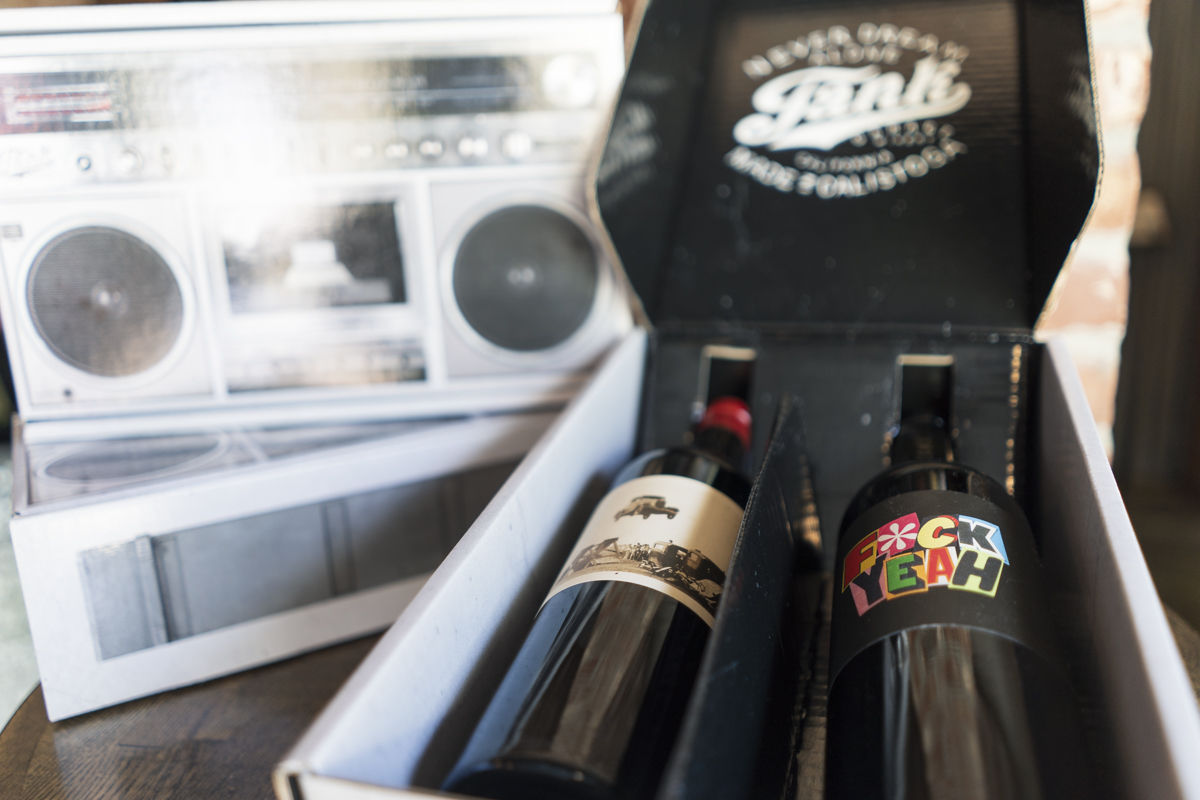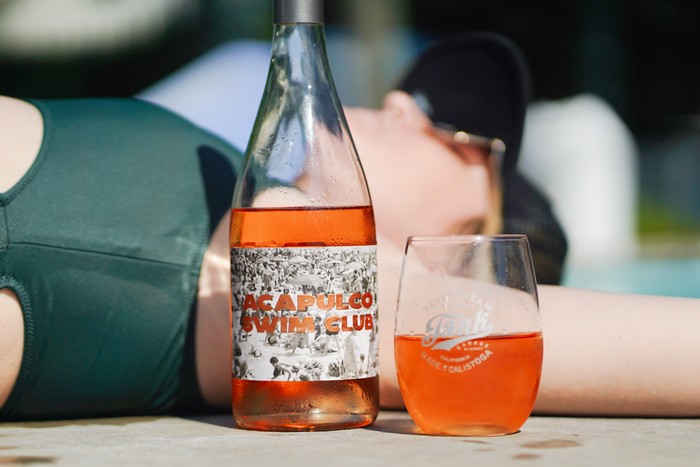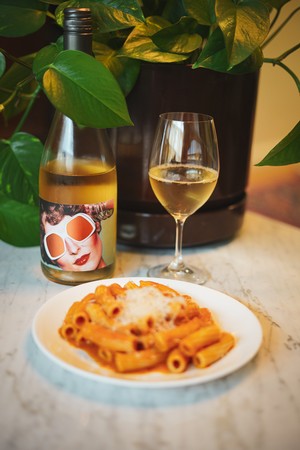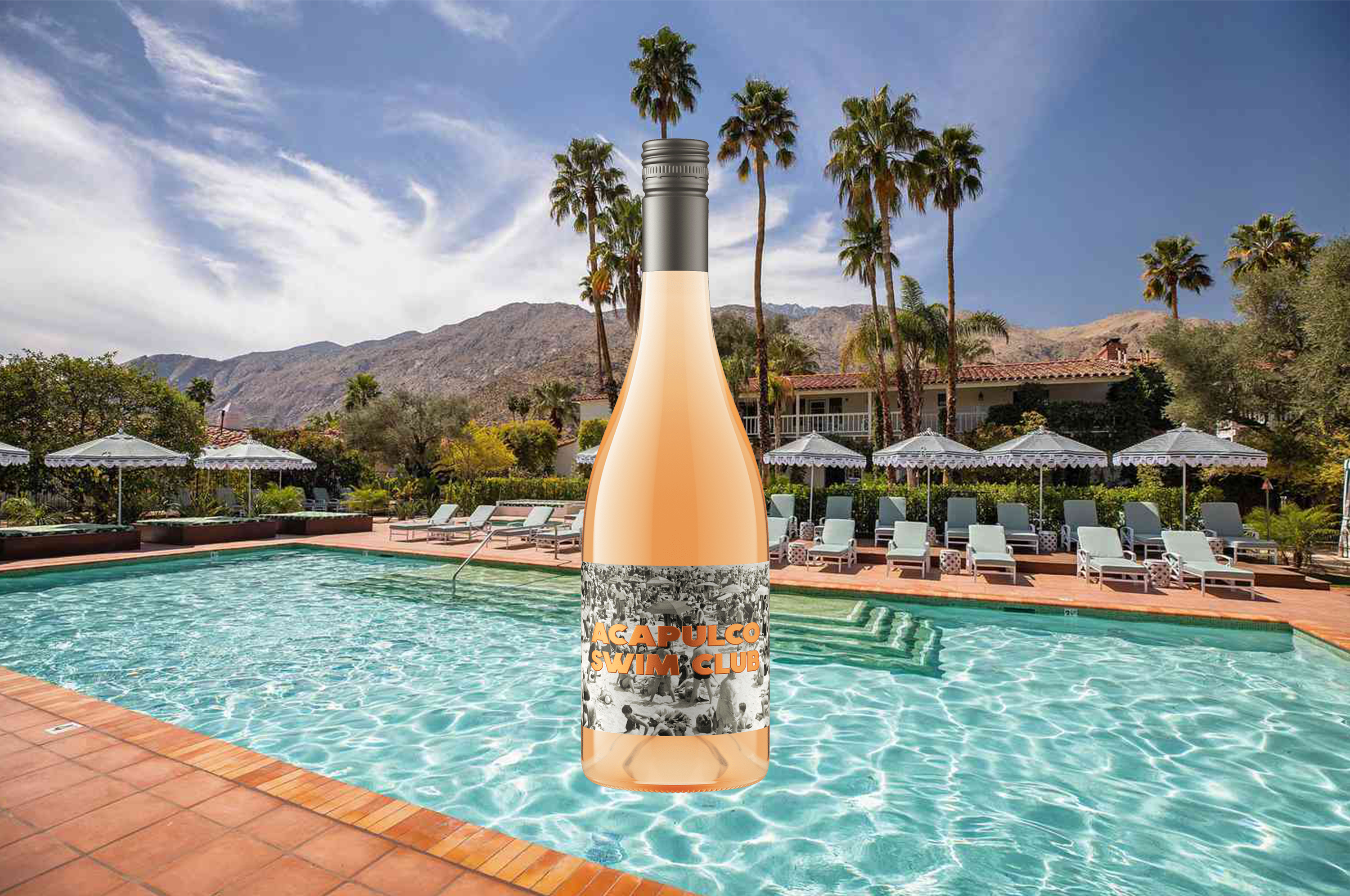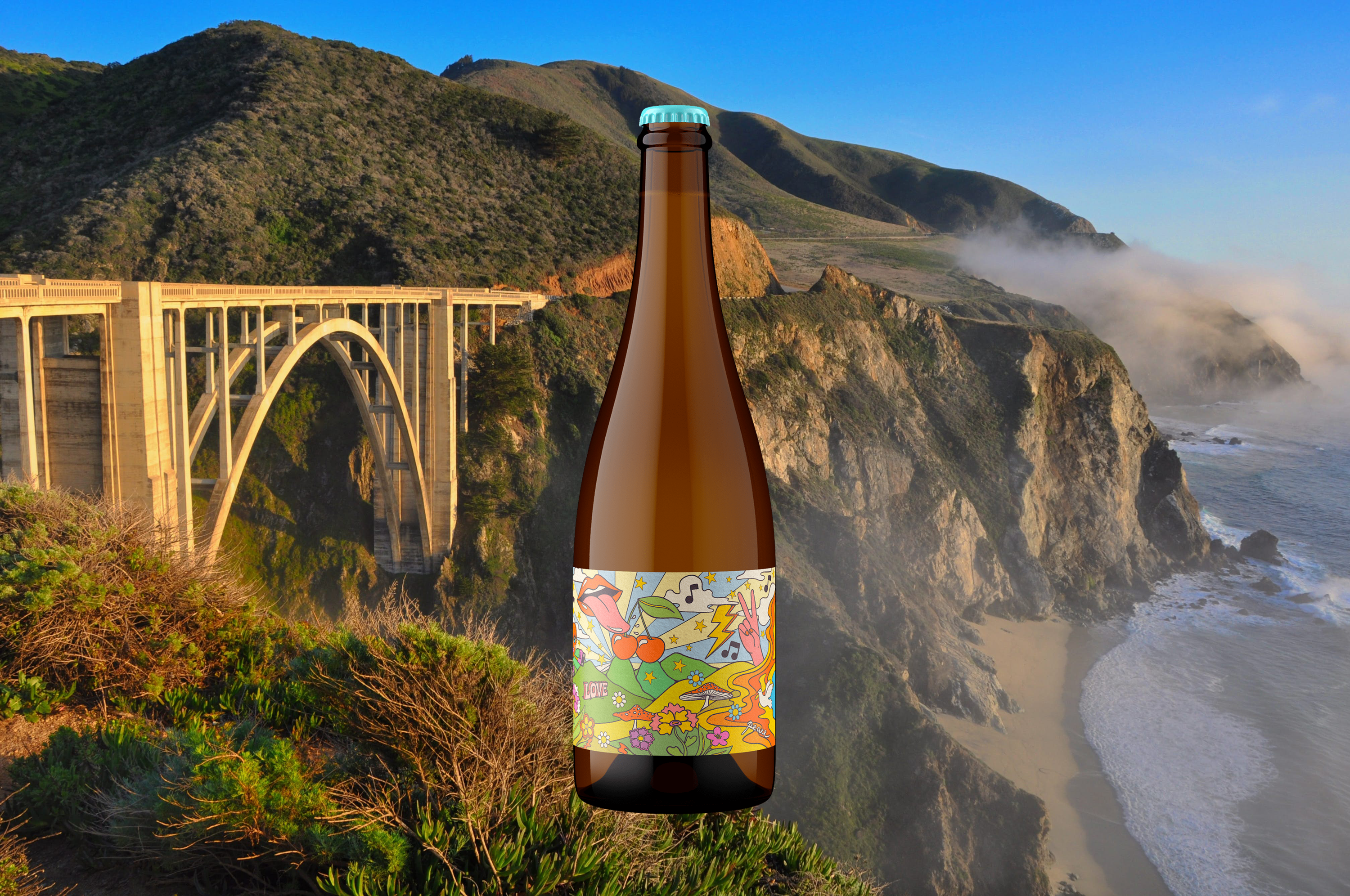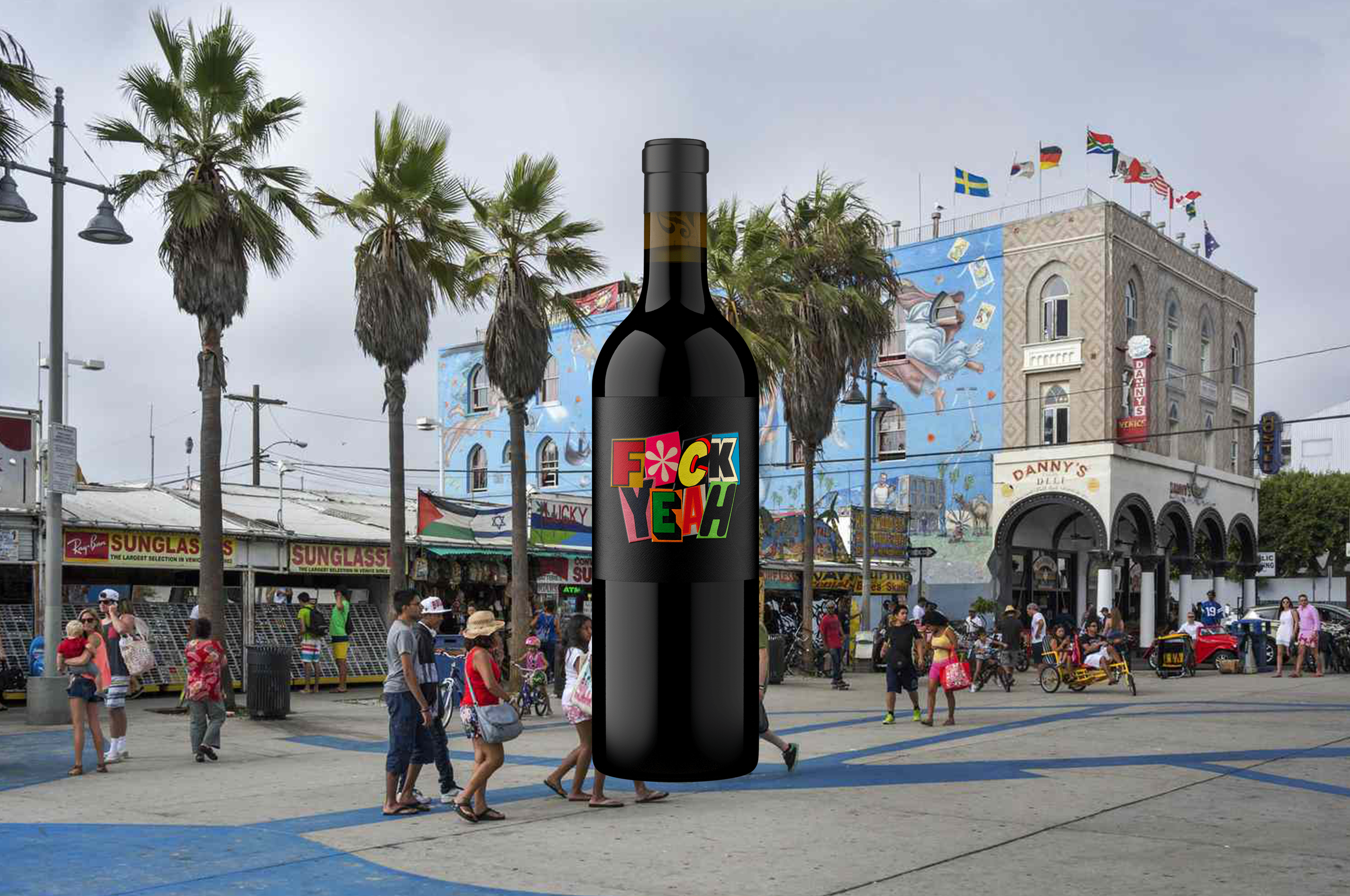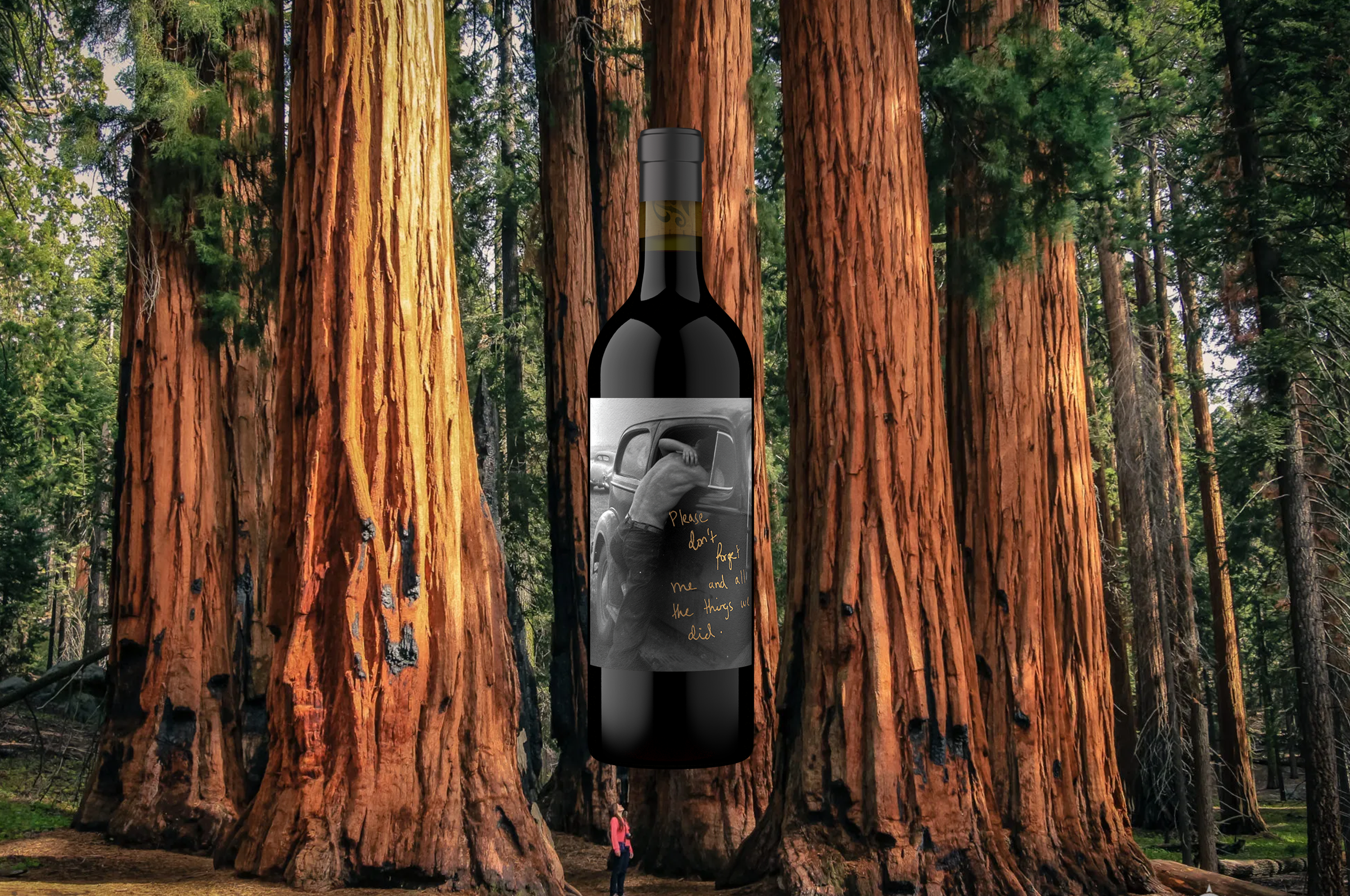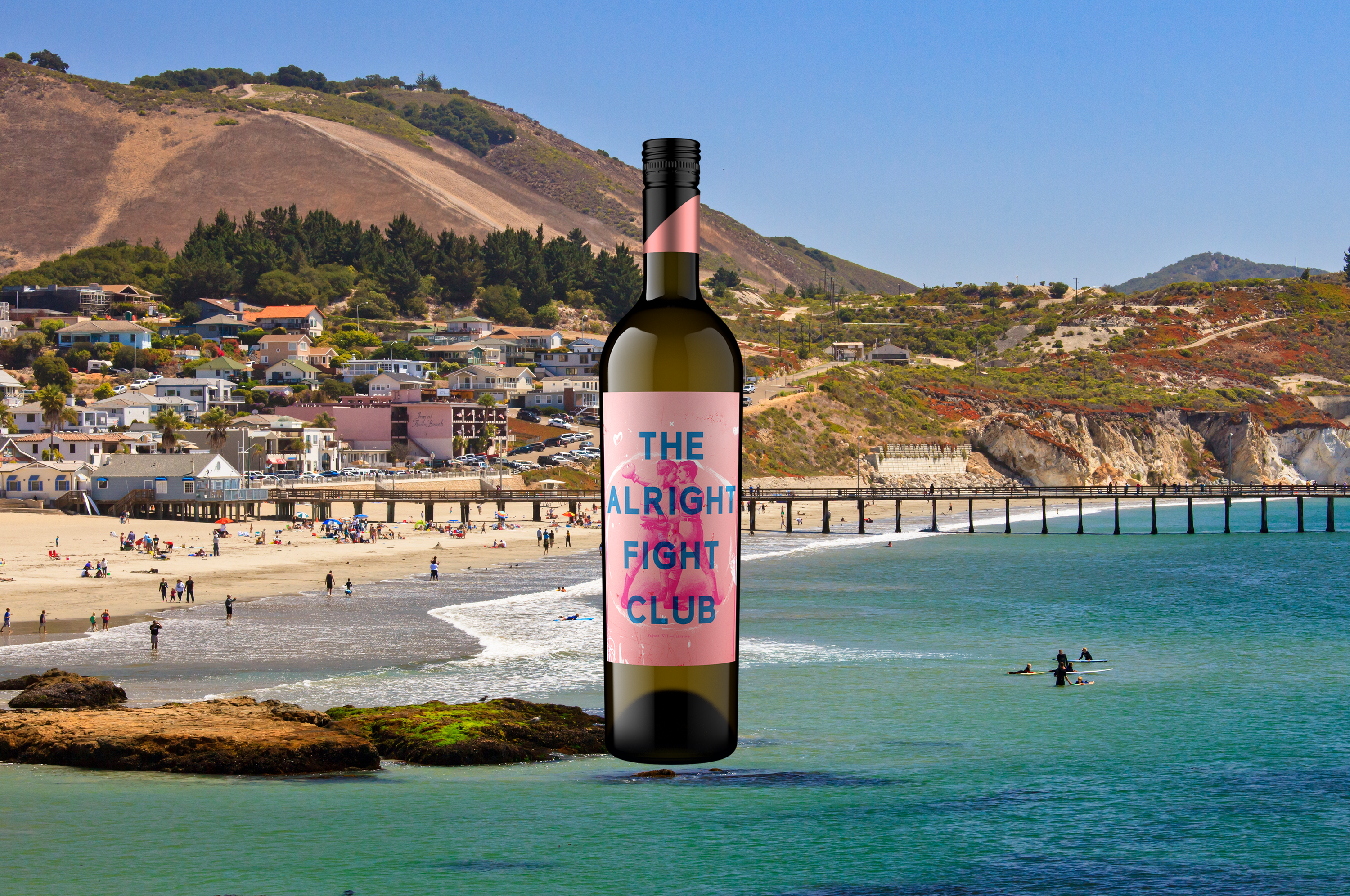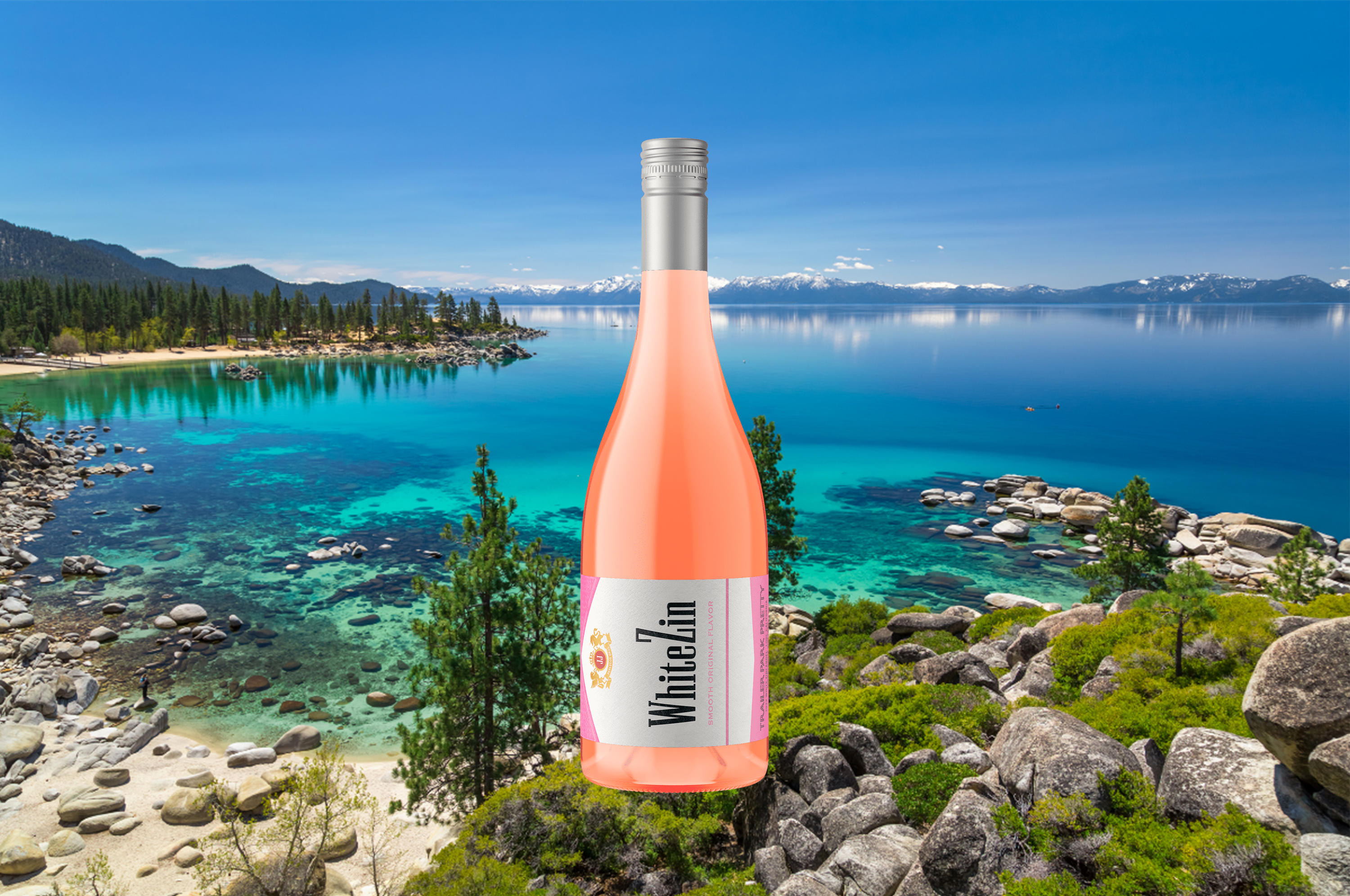Lubrication Blog
Crushed Hearts with Easy Coconut Chicken and Sticky Rice
Our funky and bright carbonic white, Crushed Hearts is the perfect wine to cure the January blues, and even better when it's paired with Thai flavors. This easy dish can be made in one pot, and all the ingredients are hella cheap. We think it's ideal for a winter weeknight dinner that's cozy and comforting, with that fruit-forward carbonic kick that perfectly compliments the herbs and rich coconut.
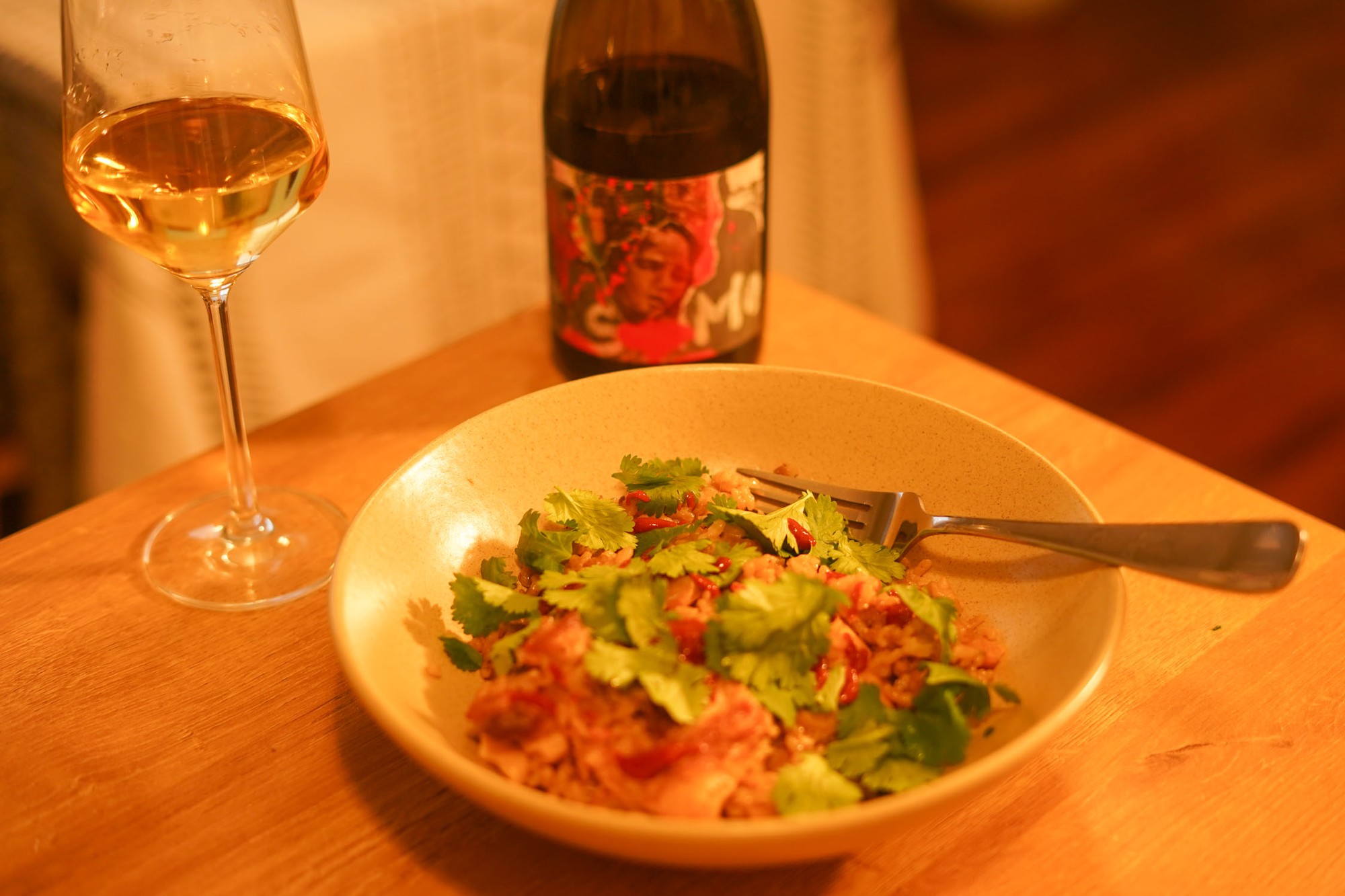
Ingredients
1½ pounds boneless, skinless chicken thighs
¼ cup neutral oil, such as safflower or canola (Olive oil works fine though!)
2 teaspoons salt
½ teaspoon black pepper
2 tablespoons chopped fresh ginger
1 tablespoon chopped garlic
1 ½cups short-grain white rice (sushi rice works well)
1 ¾cups chicken broth
1(13.5-ounce) can coconut milk
1 yellow bell pepper seeded and chopped
½ cup roasted cashews, coarsely chopped
3 scallions, green and white parts, thinly sliced (½ cup)
2 tablespoons coarsely chopped cilantro
Sriracha, for serving
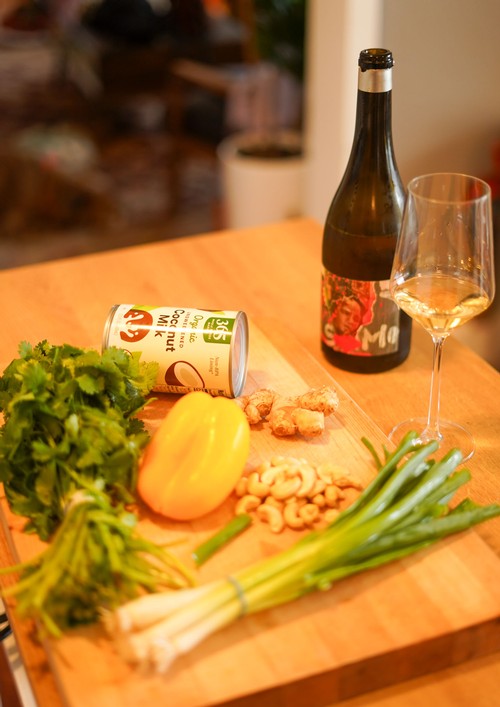
Step 1
Heat oven to 375 degrees. Rub oil on chicken thighs and season with salt and pepper.
Step 2
Heat oil in large pot, or dutch oven, and begin frying chicken thighs until there is no longer any pink. This should take about 5 minutes. Transfer chicken to a plate.
Step 3
Add a little more oil to the same pot and add garlic and ginger, stirring for about 30 seconds, or until fragrant. Add rice to pot, and stir to coat with oil, garlic and ginger. Add the chicken broth, coconut milk, bell pepper, cashews, scallions and salt and stir to bring up any brown pieces from the bottom. Place the pieces of chicken on top, and then bring pot to a boil on high.
Step 4
Cover pot and place in the oven for 20-25 minutes until rice is tender and chicken completely cooked. Take out, sprinkle cilantro all over, and serve! Add sriracha or hot sauce of your choosing. Enjoy!
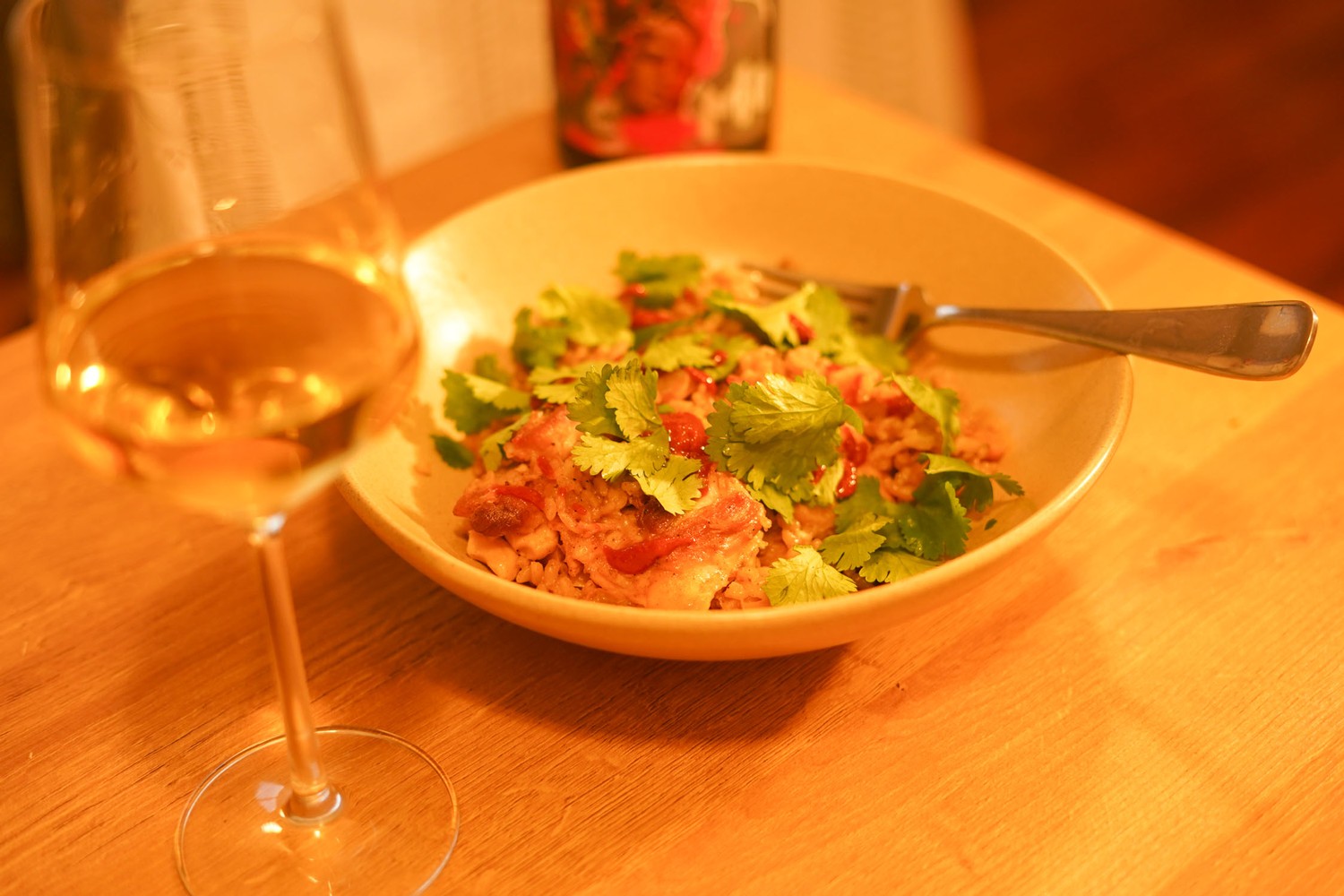
Get Crushed Hearts
Try Acapulco Swim Club With Gumbo!
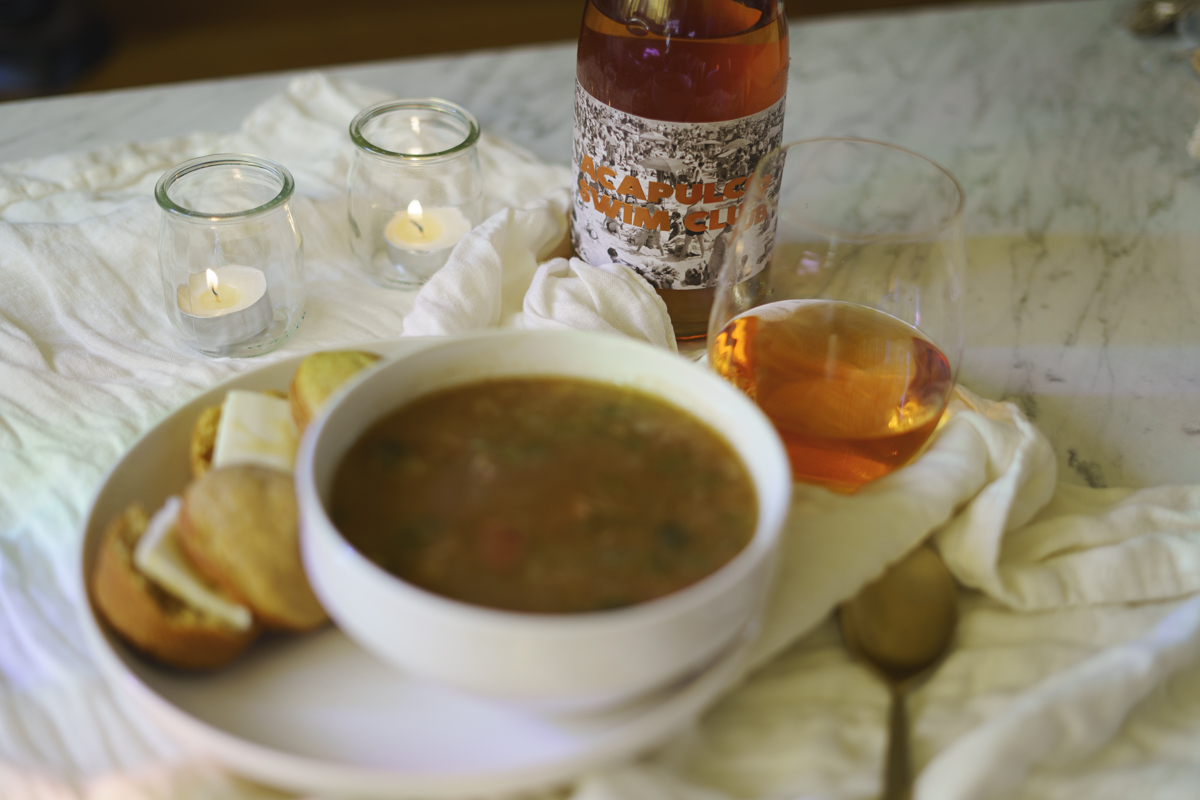
As the days shorten and the air turns crisp, our bodies crave the kind of hearty fuel that'll keep us stoked for winter's adventures. And what better way to stoke those flames than with a pot of Gumbo, a culinary masterpiece as bold and flavorful as our wines.
This Gumbo recipe, paired with the luscious, citrus notes of Acapulco Swim Club Skin-Contact White Wine, will take your taste buds on a wild ride they'll never forget. The earthy depths of the Gumbo, infused with the Cajun trinity of onion, celery, and green bell pepper, dance harmoniously with the vibrant acidity of the wine, creating an experience that's both comforting and electrifying.
The beauty of Gumbo lies in its versatility. This recipe is just a starting point – feel free to throw in your favorite ingredients and crank up the spice level if you're feeling adventurous. No matter how you customize it, the Acapulco Swim Club Skin-Contact White Wine will complement every nuance of flavor, ensuring a culinary adventure that's as unpredictable and exciting as our winemaking process.
So, gather your crew, uncork a bottle of Acapulco Swim Club, and let the enticing aromas of Gumbo fill your kitchen.
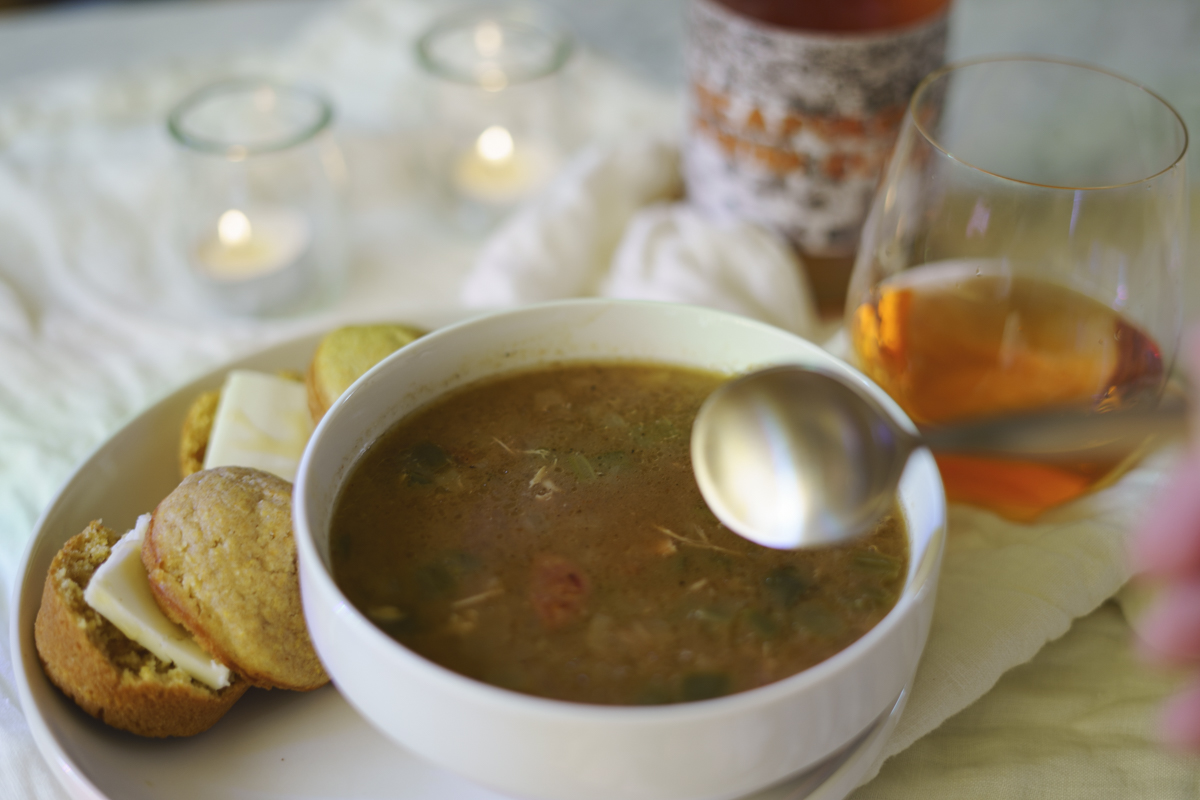
A few tips:
1. Make your own chicken or turkey stock with leftovers from holiday gatherings. Roast the bones until brown, and simmer with water, bay leaf, onion, carrot and celery for several hours until you achieve a rich, flavorful broth.
2. You can save yourself from hours stirring in front of a burner by cooking your roux in the oven while you chop your vegetables. Combine your fat and flour and place in a cast-iron pan in an oven set to 350 degrees for about 2 hours, stirring occasionally until you achieve a rich, chocolaty brown color. Roux can also be made ahead of time and stored for up to a month in the fridge. Lastly, roux can be made with any fat (oil, clarified butter, animal fats), but we love saving our pan drippings from bacon to use for our roux. Never made a roux before? Here's a great how-to guide.
3. Gumbo tastes even better in the days after you make it, as the flavors continue to meld together. Make yourself a big 'ol pot when you have family coming to town, and you'll keep everyone well fed for days.
Ingredients:
Oil, clarified butter, or bacon fat
2 cups Onion, small dice
1 cup Celery, small dice
1 cup Green Bell Pepper, small dice
1 Head Garlic, minced
1/4 cup Cajun/Creole Seasoning (We love Tony Cachere's, but you can also make your own with: garlic powder, onion powder, black pepper, white pepper, smoked paprika, thyme, oregano, cayenn and salt)
2 cups Dark Roux (see tips above)
1 Gallon Turkey or Chicken Stock
1 lb Andouille Sausage, sliced into half moons
1 lb cooked Turkey or Chicken, shredded (perfect for using up leftovers from your holiday dinner!)
Bay leaf
A note about customizing this recipe: Feel free to use whatever meat (including seafood) in place of the chicken. You can also add vegetables like Okra and increase the seasoning/spice level to your taste. File Gumbo can be added at the table for added flavor.
Step 1
In a large pot, heat a small amout oil and add diced onion, celery and bell pepper to the pan. Sweat until onions become translucent and add about 1/4" cup of cajun seasoning and continue cooking on low until the aromatic vegetables are completely soft.
Step 2
In a large stock pot, add 2 cups of Dark Roux to the stock and whisk to fully combine. Add cooked aromatic vegetables and bring to a simmer, stirring occasionally to ensure there are no lumps. Add a bay leaf to the pot and Simmer on medium for about an hour.
Step 3
Add meat and simmer for an additional 30 minutes, or until your gumbo reaches your desired consistency. Season with cajun seasoning blend to taste. The soup should be thick enough to coat the back of a spoon, but can be thinned out with a bit of stock if you prefer a brothier version.
Step 4
Serve with steamed rice, a side of cornbread and a hefty pour of Acapulco Swim Club Skin-Contact White Wine.
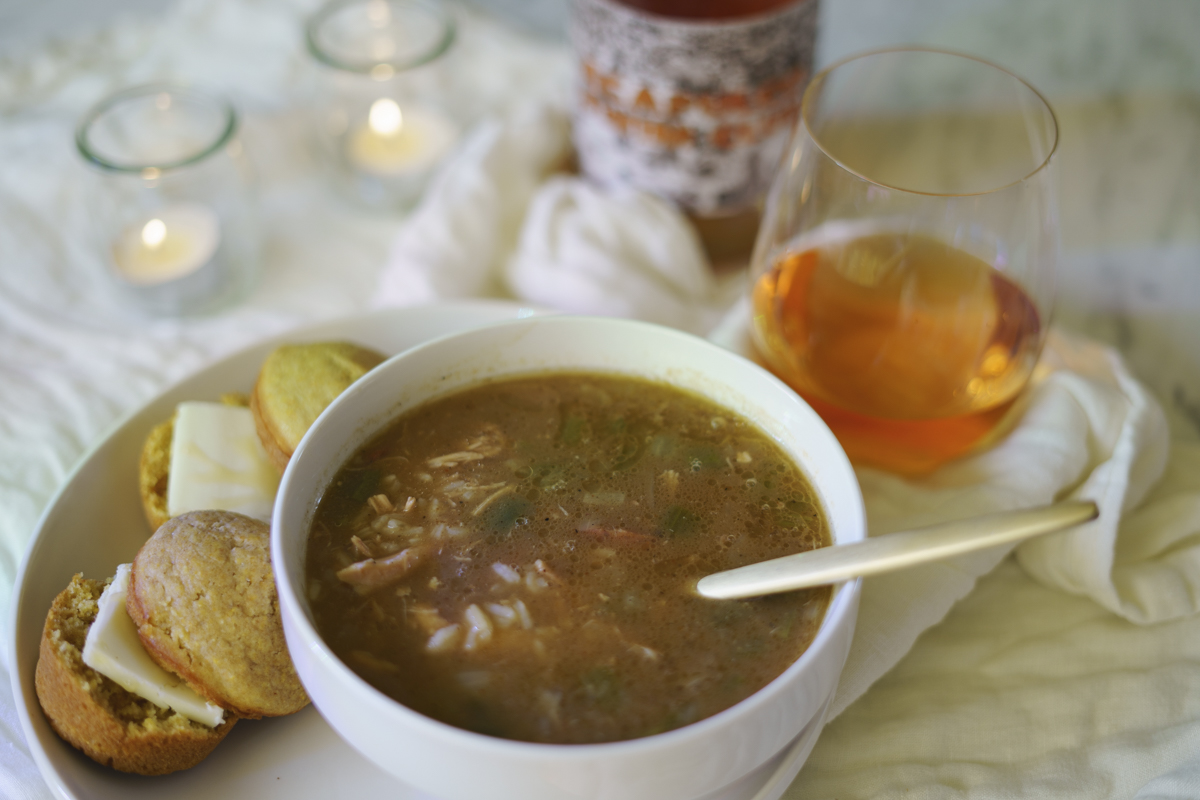
Order Acapulco Swim Club
Now in Stereo
Tank Garage Winery's Boombox Wine Gift Box: The Coolest Wine Gift of 2023
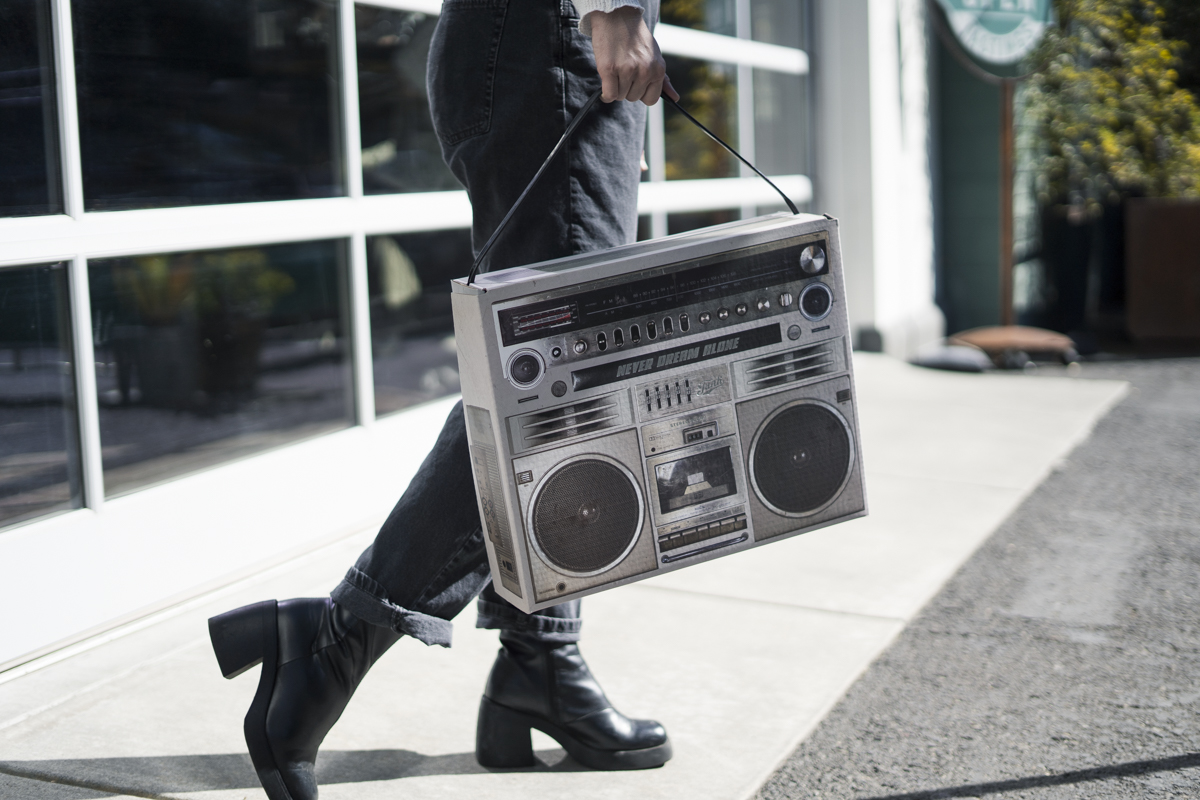
You know what's cooler than a wine gift this holiday season? A wine gift that comes in a boombox! That's right, Tank Garage Winery is now offering its delicious wines in a limited-edition boombox gift box that is sure to turn heads.

Like all good things, the boombox was born out of the 1970s. It quickly became a symbol of hip-hop culture and the rebellious spirit of the youth. Over time, boomboxes became more and more sophisticated, with features like equalizers, dual cassette decks, and tricked-out sound meters.
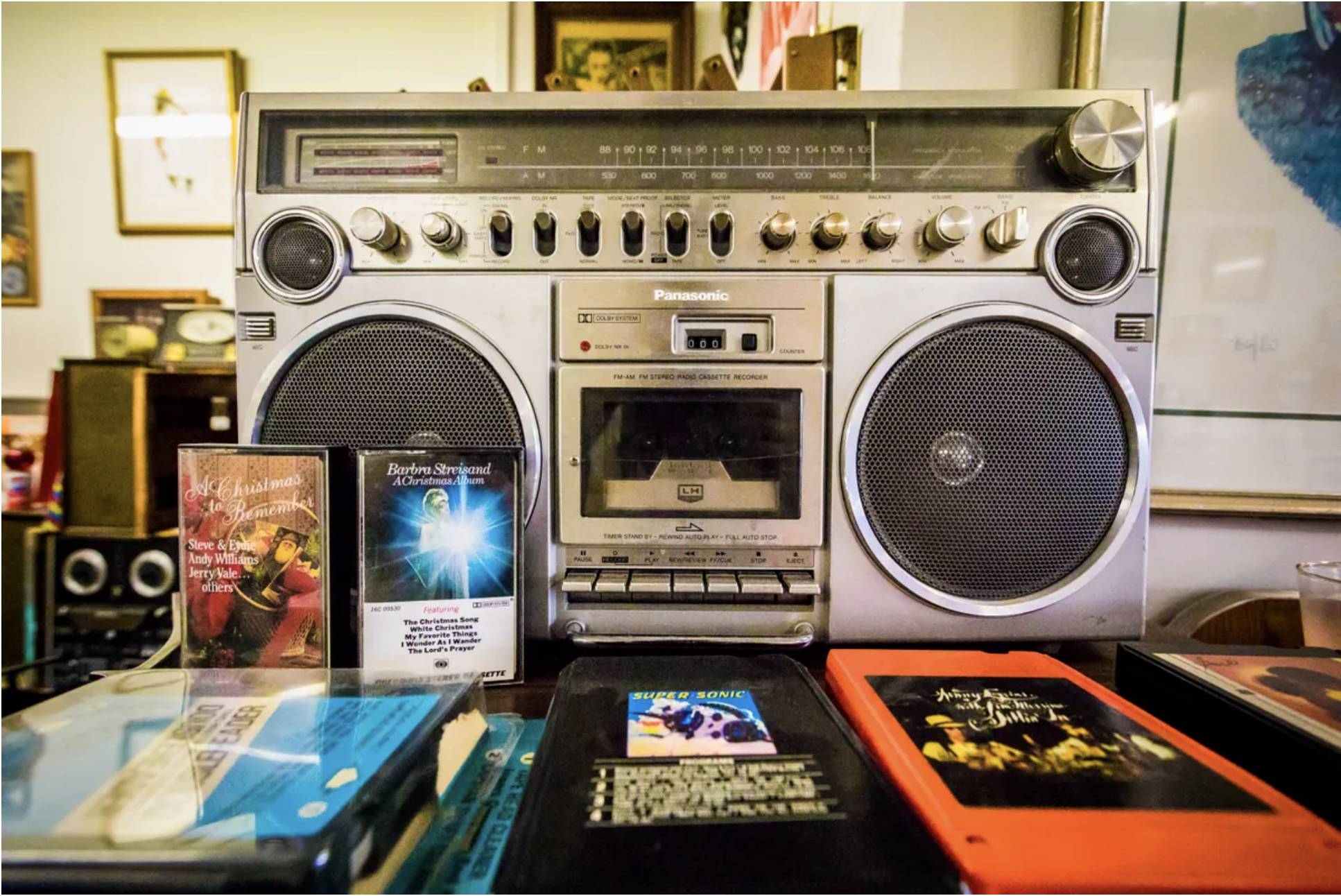
Our boombox gift box is modeled after the legendary Panasonic RX-5500, one of the most iconic boomboxes of the early 1980s. It features all of the classic elements, including a tape deck, speakers, and knobs. But the best part is, it's filled with delicious Tank Garage wines!
We offer a variety of curated gift options, so you can find the perfect one for your friends, family, or colleagues. Whether they're fans of red, white, or rosé, we have something for everyone.
Special Offer: $1 shipping on Boombox Gift Boxes with code: DOLLARGIFT at checkout through 11/24.
Final Harvest Round-Up
What a wild year! With 2023's long, cool spring, we picked our fruit 15 days later than last year on average, but when it came, it was magnificent. In total, this year we processed 124 tons of grapes across 9 different counties, and we snagged 22 different varietals until harvest officially came to a close on October 26th. Our cellar team is already working away at the cool shit that we're going to have coming out this coming year so keep your eyes peeled for all the new juice!
October 20th: Siletto Vineyard-Bound
The time finally arrived for us to travel down the coast towards Siletto Vineyard in Tres Pinos in San Benito County. Here we hauled 1.6 tons of Barbera and 2 tons of Négrette. Barbera is one of our favorites and will go into some more of our Cal-Ital hits like Checkered Past and Tutto Passa. The Négrette will be used to smooth out and perfect some of our other unique red blends this year!
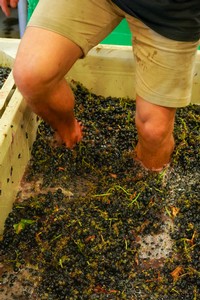
October 21st: Headed back up North
One day later, we hopped skipped and jumped about 4 hours north for some cool, cool Cabernet Sauvignon from Vine View Ranch Vineyard in the Yorkville Highlands of Mendocino County. This will likely go into one of our sexy, deep, big, bold, Bordeaux-style wines, like this season’s Talk Dirty to Me.
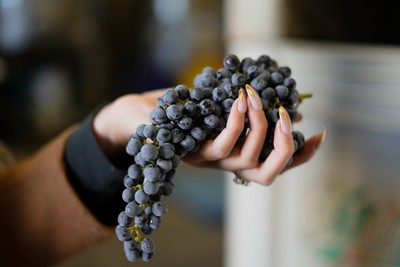
October 26th: Our Final Haul!
On a bright sunny Thursday, our assistant winemaker, Matteo, made the journey to and back from Paso Robles with a truckload of Cabernet Sauvignon, and Petite Sirah from the Willow Creek AVA. This is a cool-weather climate compared with most AVAs in the Paso Robles region, bringing out nuanced and refined qualities in it’s fruit. We can’t wait to see what kind of rad stuff our team will play around with here.
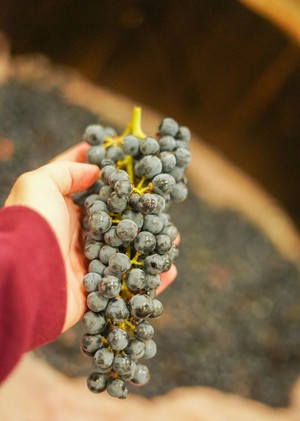
2023 Harvest Update
It's harvest time, y'all! And the Tank Garage Winery cellar is buzzing with activity. We've been putting on some serious miles this year, traveling all over California from San Luis Obispo to Mendocino to the Sierra Foothills to pick the freshest grapes for our wines.
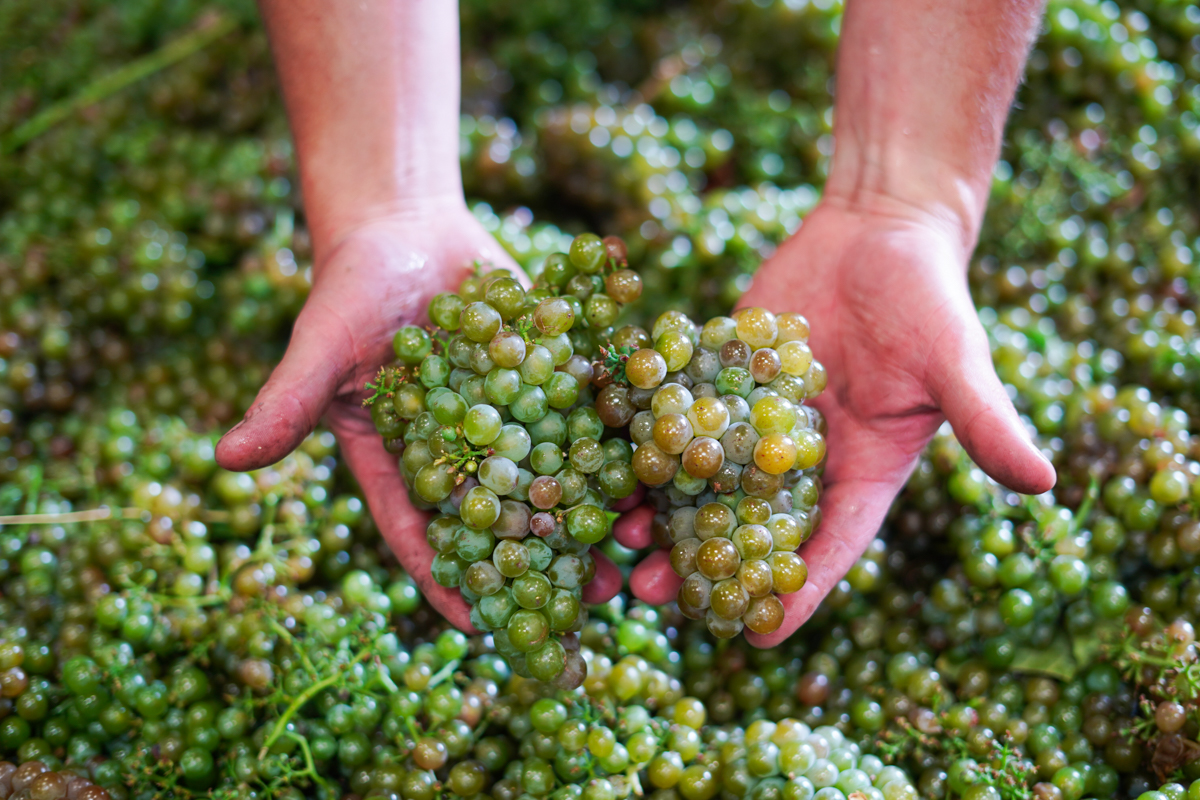
August 18: The Journey Begins
Our first taste of white wine grapes came from Solano County's sustainably-farmed McCormack Ranch Vineyard. We love the aromatic Gewerztraminer these vines produce, chock full of bright acidity and bursting with flavor. Will it be turned into our next pét-nat? You'll have to wait and see!
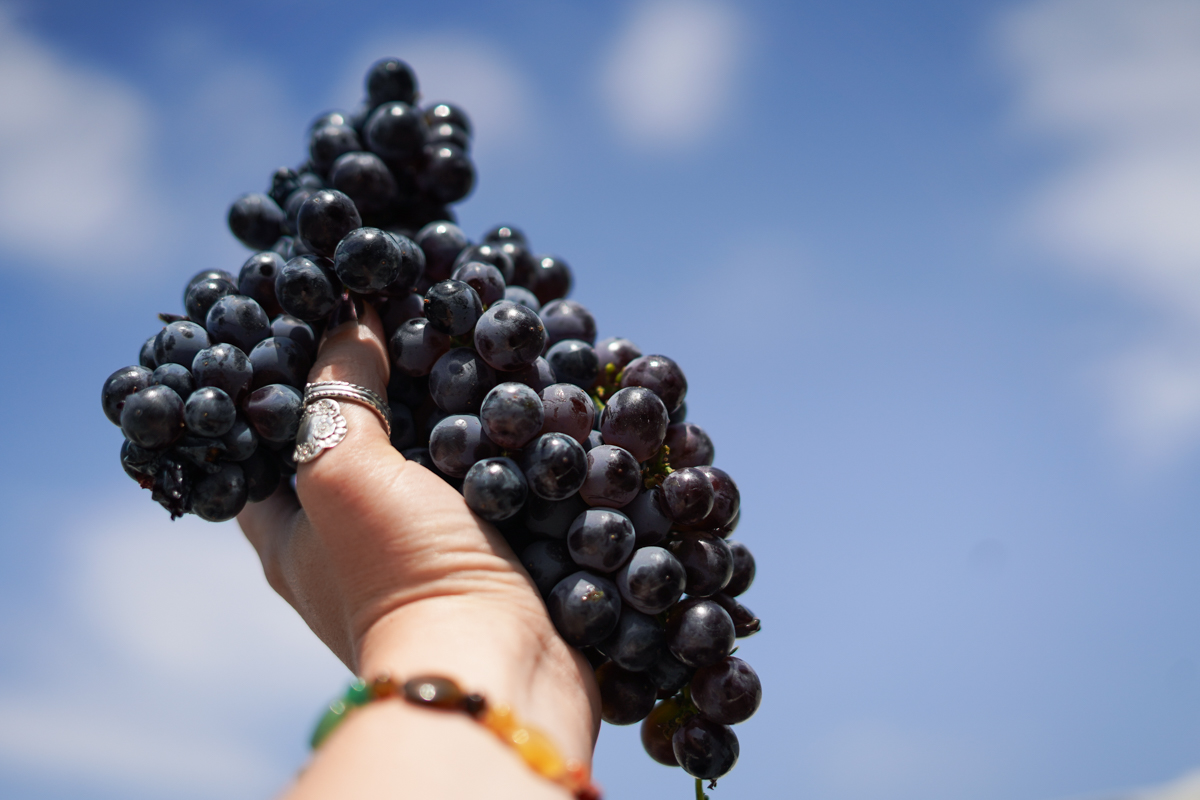
August 21: Our first red fruit!
Our first red fruit of the season wa in the Sierra Foothills at Sierra de Montserrat Vineyard, where we picked the first grapes of the season a beautiful batch of Mourvèdre. This grape variety is our winemaker's personal favorite, and it's always a big part of our Rosé program. The fruit was stunning, and we were filled with anticipation for the wines to come.
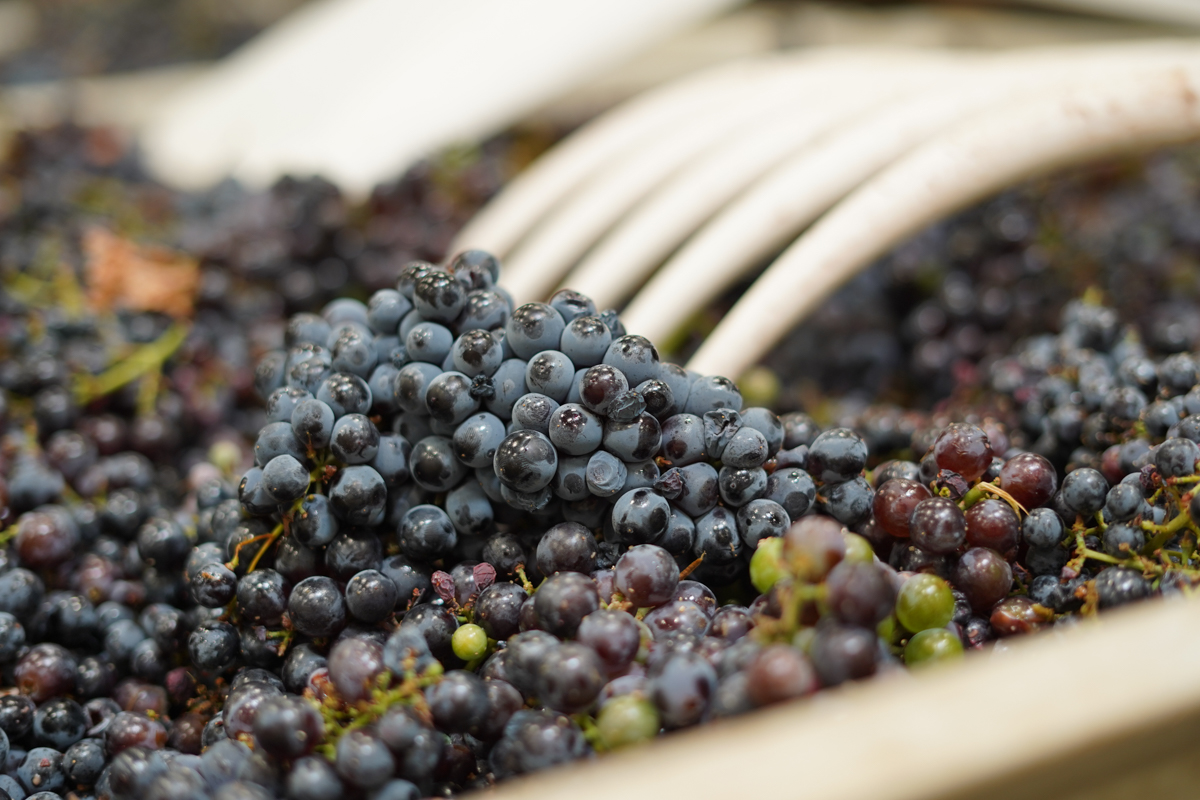
August 23: Rosé in the Making
Just two days later, we were back in the Sierra Foothills at Clos du Loc Vineyard, picking Grenache and Counoise. These grapes, perfectly suited for rosé wines, hinted at the diverse range of varieties we'll be making wines from this season. At this point, all of the rosé fruit has been harvested, and we're excited to see its transformation as it moves through the fermentation process.
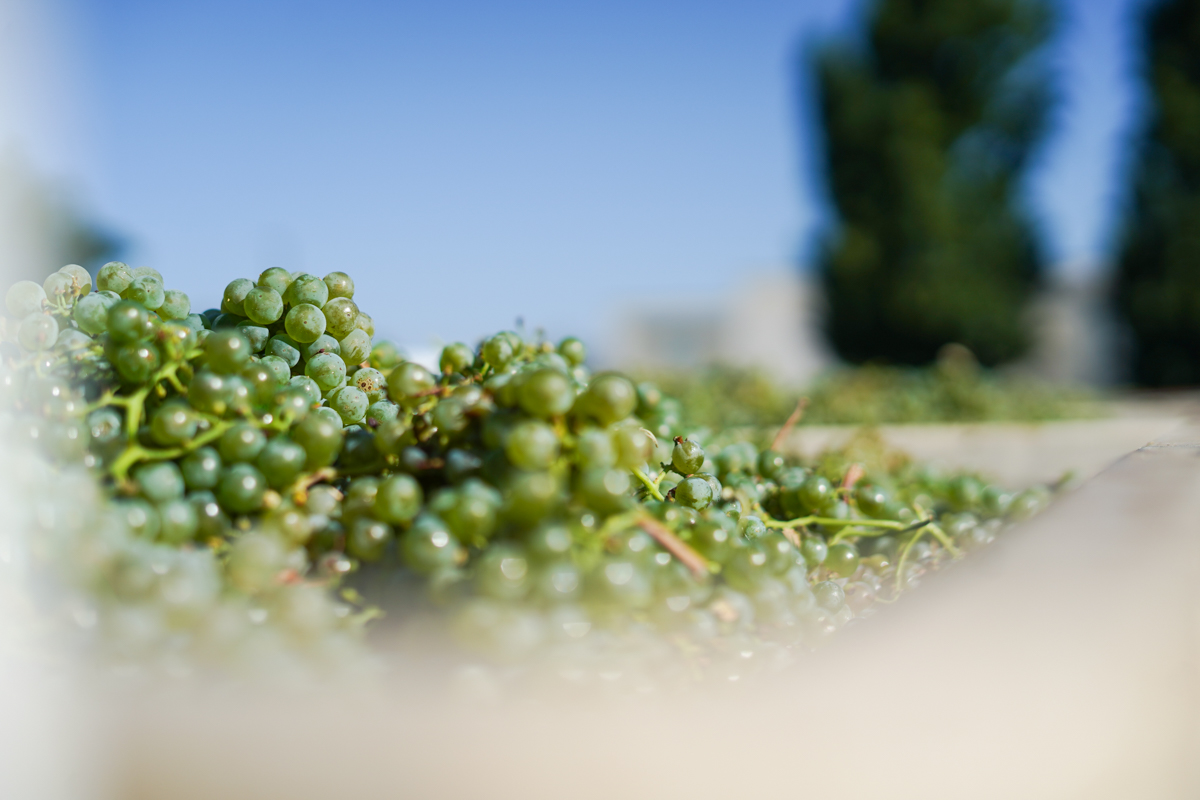
August 29: Albariño is here!
Our next taste of white wine grapes came a week later from Solano County's McCormack Ranch Vineyard, where we sourced our Gewurztraminer earlier this season. This location sits on the banks of the Sacramento River Delta near the quaint town of Rio Vista. Sustainably farmed, these Albariño grapes are known for their high acidity and aromatic profile, promising a crisp and refreshing wine.
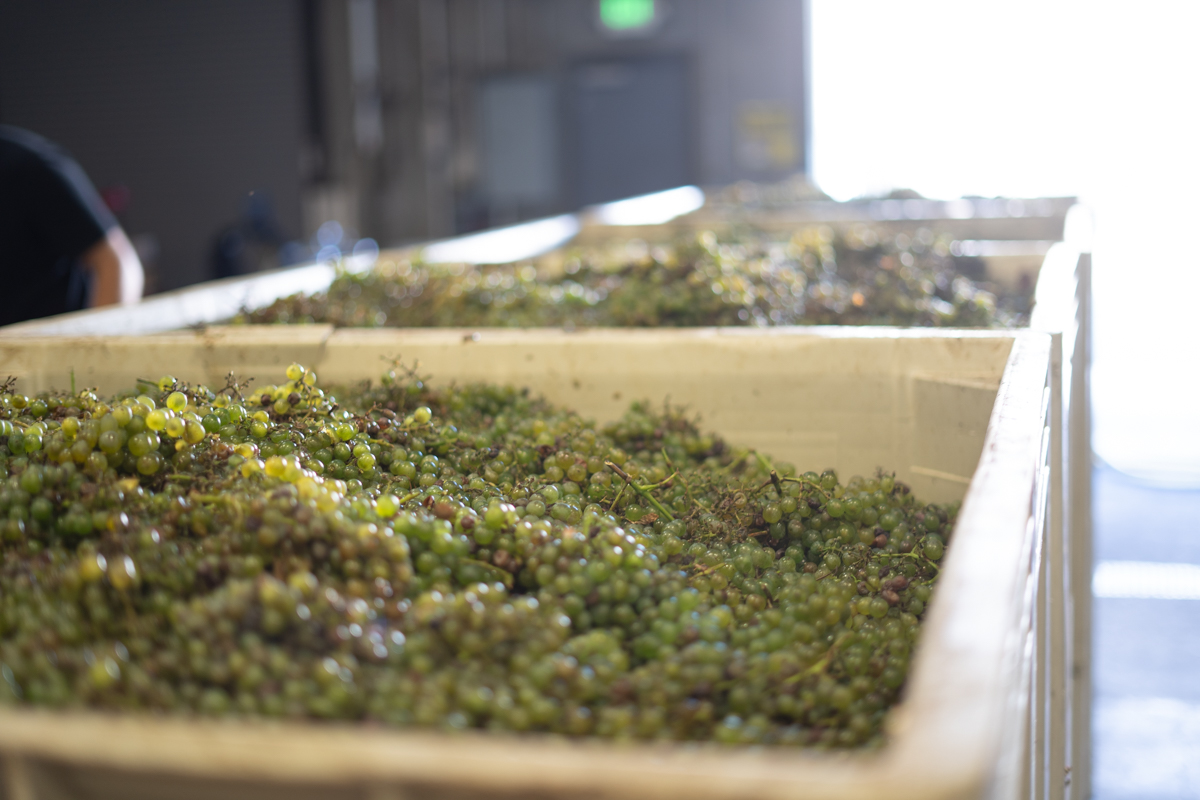
October 2: A Long Awaited Arrival
September was a quiet month in our cellar as we patiently waited for our next grapes to roll in. The 2023 vintage had a cooler start to the season, so many of our vineyards were 2-3 weeks behind last year's Harvest schedule. As October rolled in, we were thrilled to welcome Grüner Veltliner from Santa Maria Valley. Known for its versatility and unique flavor profile, the wait for these grapes was indeed long. But as the saying goes, good things come to those who wait.
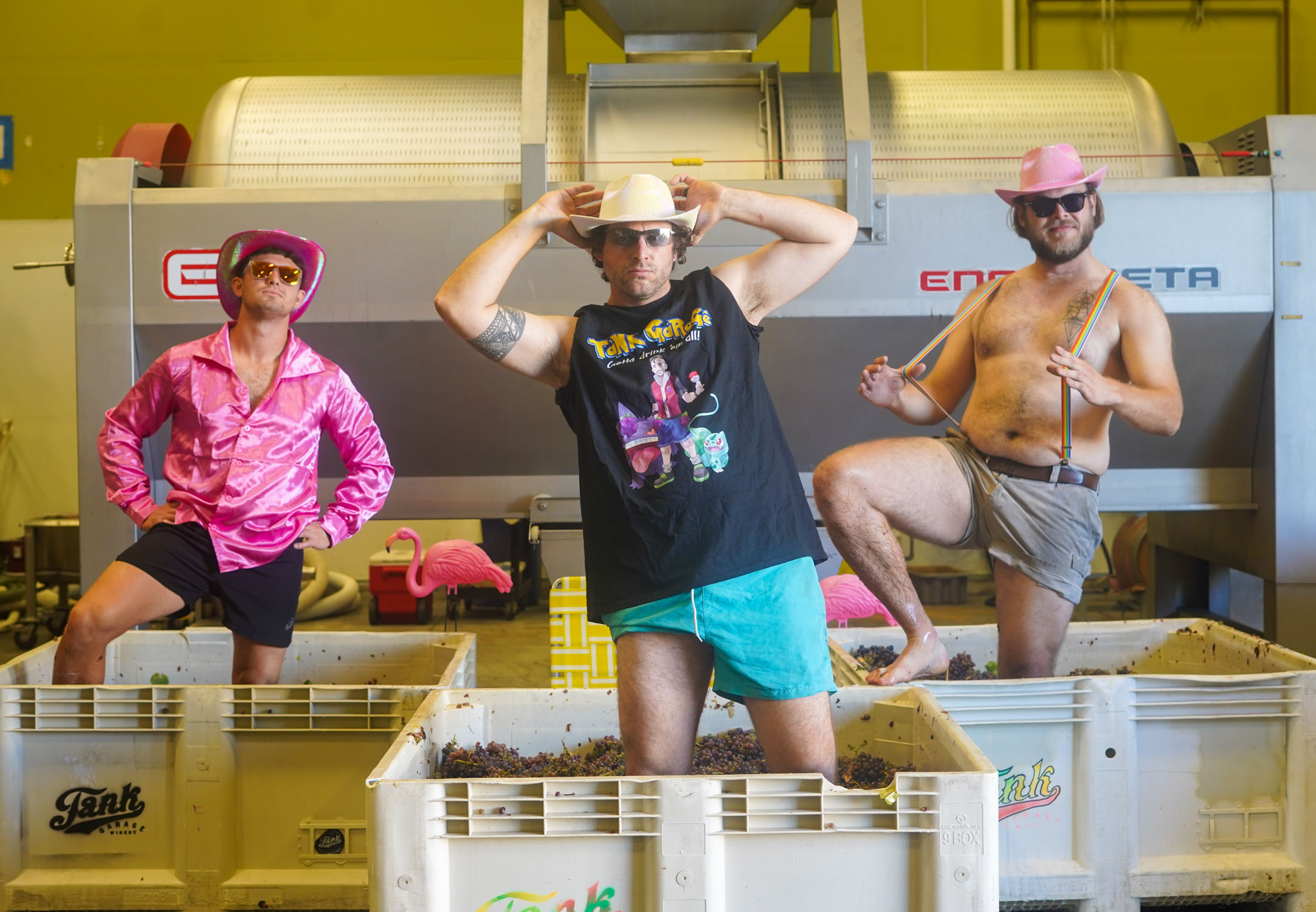
October 4: Foot-Stomping A Rare Find
Next on our journey was the Trousseau Gris from the legendary Fannuchi-Wood Road Vineyard in Russian River Valley. This rare Italian variety is the only planting of Trousseau Gris in the entire US! Known for their delicate and intricate flavors, we keep coming back to this vineyard year after year. We love Trousseau Gris for our Orange wines, and, naturally, decided to have a foot-stompin' dance party in the cellar to crush the fruit in style.

October 11: A Napa Valley Debut
Our journey took us to Napa Valley for the first time this season, where we picked Syrah from Frediani Vineyard in Calistoga. We've been working with the 5th generation farmer, Jim Frediani, for as long as Tank has existed, and for good reason. Home to some of the oldest vines in California, this vineyard is known for its scorching hot days and cool nights, resulting in grapes we go gaga over. We foot-stomped these beautiful bunches to delicately crush the fruit without releasing the seed tannins, leading to an intensely smooth wine perfect for our bold red blends.

October 12: Picking Up the Pace
The harvest season picked up the pace with the arrival of Petite Sirah from Vine View Ranch in Mendocino. Known for its robust, spicy characteristics and a bold tannin structure, we love blending this variety with Zinfandel and Cabernet to produce wines you'll obsess over, like I Love You But I've Chosen Disco.
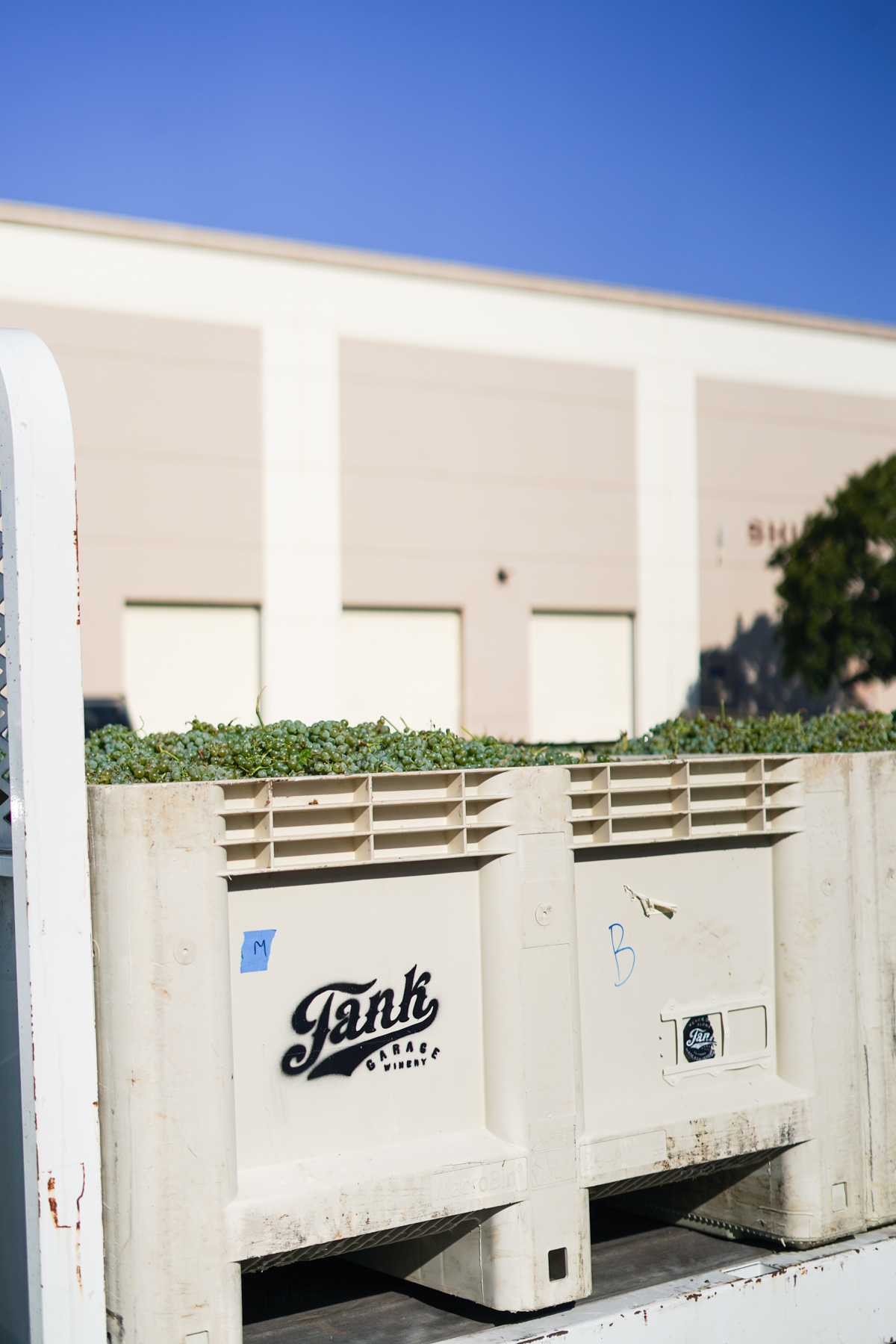
October 13: Down The Golden State Coast
The next stop in our journey brought us to Los Alamos with the Reisling from Kick On Ranch. Known for their high acidity and aromatic intensity, these grapes highlight the breezy terroir of the SLO Coast.
More to come...
We ain't done yet! Stay tuned next month to hear all about the last few weeks of Harvest – it's going to be an exciting time.
Behind our Latest Tank Cares Project: The Roots Fund
When we finally solidified our collaboration with the Blundstone Team (a partner we’d been dreamin’ of coordinating with for a very long time), we were determined to conjure up a Tank Cares project that was going to give back in a big way. With Blundstones being the prominent footwear choice for winemakers, we were both entrenched in the wine industry in big ways and thought that a great way to pay it forward was giving to an organization that can enrich and diversify the industry that we love. That’s why we want you to know more about our most recent partner on It Was All a Dream, The Roots Fund. $2 from every sale of It Was All a Dream goes directly to this organization! Read all about them below.
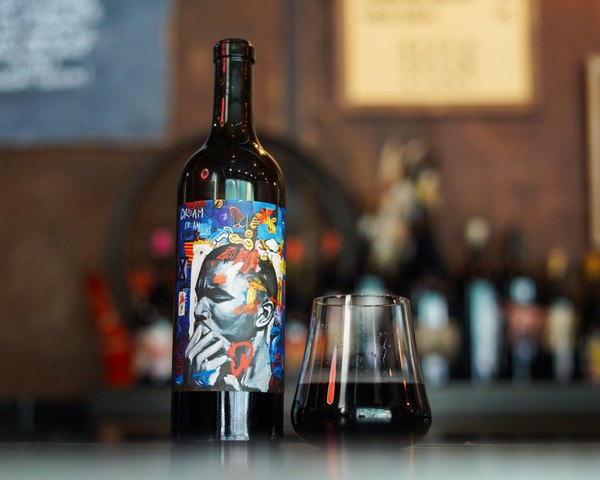
The world of wine is steeped in culture and tradition, but there’s no doubt that it is nowhere near as inclusive and diverse as it should be. Tank exists to shake things up in the wine world; break the mould of the same old stories that have been told for centuries, and everyone deserves a seat at the table for the ride. We are inspired and proud to support The Roots Fund: an organization that has emerged to bring about positive change. The Roots Fund is not just about wine; it's about nurturing the growth of diversity, equity, and inclusivity within the industry.
Established in 2020, the organization is the brainchild of passionate wine professionals, Ikimi Dubose-Woodson, Carlton McCoy Jr. and Tahiira Habibi, who recognized the need for change within the industry. Their mission is to provide opportunities, resources, and support to underrepresented individuals in wine, from vineyard to cellar, and from tasting room to boardroom.
Their Key Initiatives and objectives of The Roots Fund, provide incredible support for the BIPOC community. Providing scholarships and education allows aspiring wine professionals from marginalized communities to receive funding for wine courses, certifications, and programs that lead to careers in viticulture, winemaking and wine business careers. They open the door to mentorship and networking opportunities, facilitating mentorship programs, and connecting industry leaders with their scholars: bridging the gap for individuals who may otherwise not have access to these openings. The Organization does excellent work breaking down financial barriers that can often hinder diversity in the industry by offering financial assistance where needed.
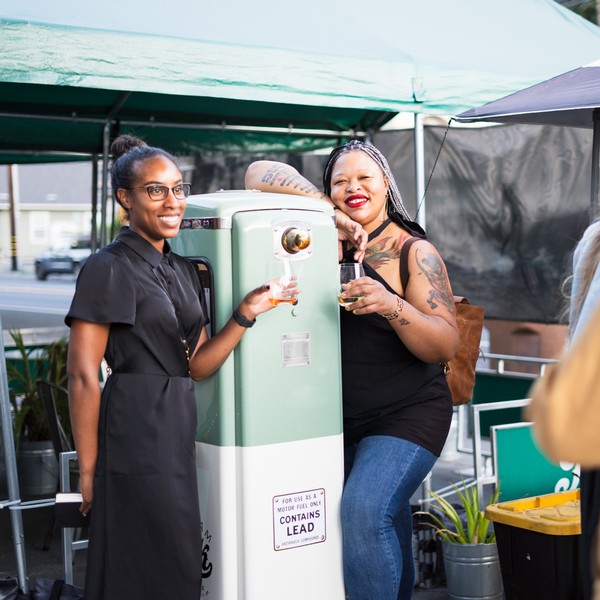
Advocacy is so important, and The Roots Fund is a pioneering changemaker in advocating for marginalized communities in the world of wine, working to change the narrative around who belongs in the industry. Since its inception, The Roots Fund has made significant strides in promoting diversity and inclusivity. Their scholarship recipients have gone on to become winemakers, viticulturists, sommeliers, and educators, enriching the industry with their unique perspectives and talents.
We are super proud to collaborate with a change-making organization like them, and we need you to spread the word! Anyone passionate about fostering an environment in wine that is inclusive of all races, and cultures can get involved. You can donate directly here. And, of course, you can buy this incredible wine, which is not only an incredibly juicy, bold and delicious Shiraz, but has a collector’s item bottle with stunning artwork from our long-time collaborator Dwight White II.
Be a changemaker, and remember: never dream alone.
BUY IT WAS ALL A DREAM
DONATE TO THE ROOTS FUND
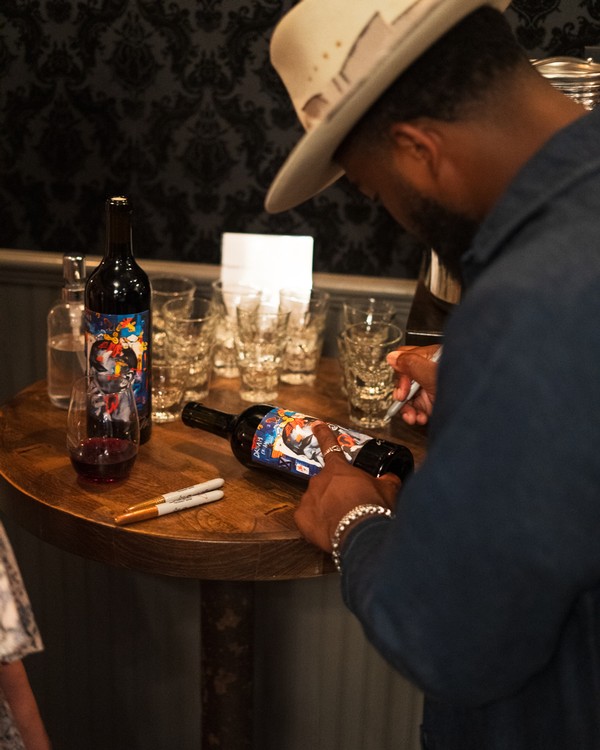
Summer Squash Bowl with Mothersky Pét-Nat
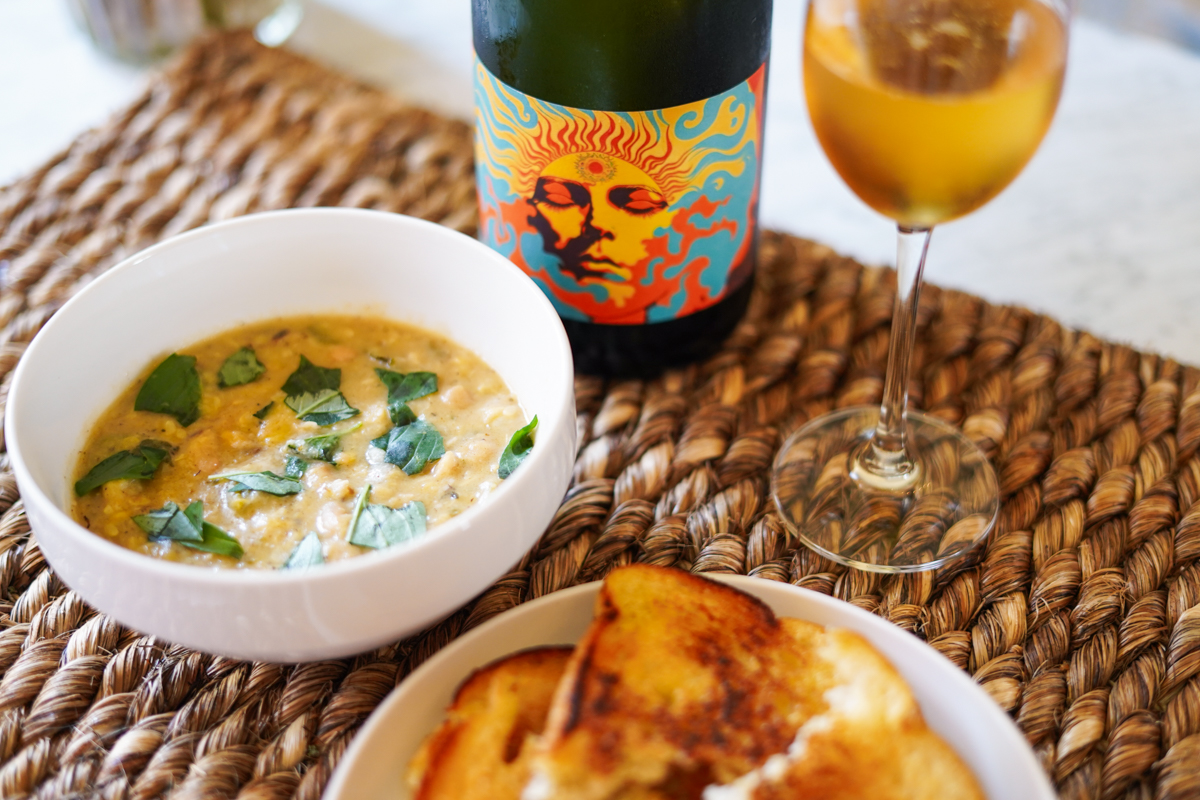
Summer squash is in season, and that means it's time to get creative in the kitchen. This versatile vegetable can be used in a variety of dishes, from light and refreshing salads to hearty stews.
One of our favorite ways to enjoy summer squash is a creamy, garlicy White Bean & Squash Bowl served with toast points. It's everything we want in a late-summer dinner: easy to make, delicious and it feeds a crowd. Paired with a glass of our newly-released Mothersky Pét-Nat, you have a match made for the cosmos.
Ingredients:
4 medium sized Zuchinni and Summer Squash, large dice (roughly 4-5 cups)
1 head of garlic, peeled
3-4 sprigs of fresh Thyme, minced (can sub 2 tsp dried thyme)
1/2 c Olive Oil
2 cans Cannelini Beans
1/2 c Cream
1 lemon, zested and juiced
Fresh basil, roughly torn for garnish
Salt & Pepper, to taste
Parmesan Cheese, optional
Sourdough Bread, for dipping
Step 1
Heat oven to 325 degrees and add zuchini, squash, garlic, thyme and olive oil to a dutch oven and generously season with salt and pepper. Once oven has heated, cook vegetables in a dutch oven, covered, for approximately 45 minutes or until the squash has softened completely.
Step 2
Using a fork, gently smash the zucchini and garlic and add cannelini beans, cream and lemon juice. Bring to a simmer and stir, reducing slightly until the pot has a stew-like consistencey.
Step 3
Meanwhile, brush sourdough bread with a generous amount of olive oil and toast on both sides. Optional: rub taost points with the cut side of raw garlic for even more flavor!
Step 4
To serve, top bowl with freshly grated parmesan (optional) and serve with toast points. Pour yourself a glass of Mothersky and DIG IN!
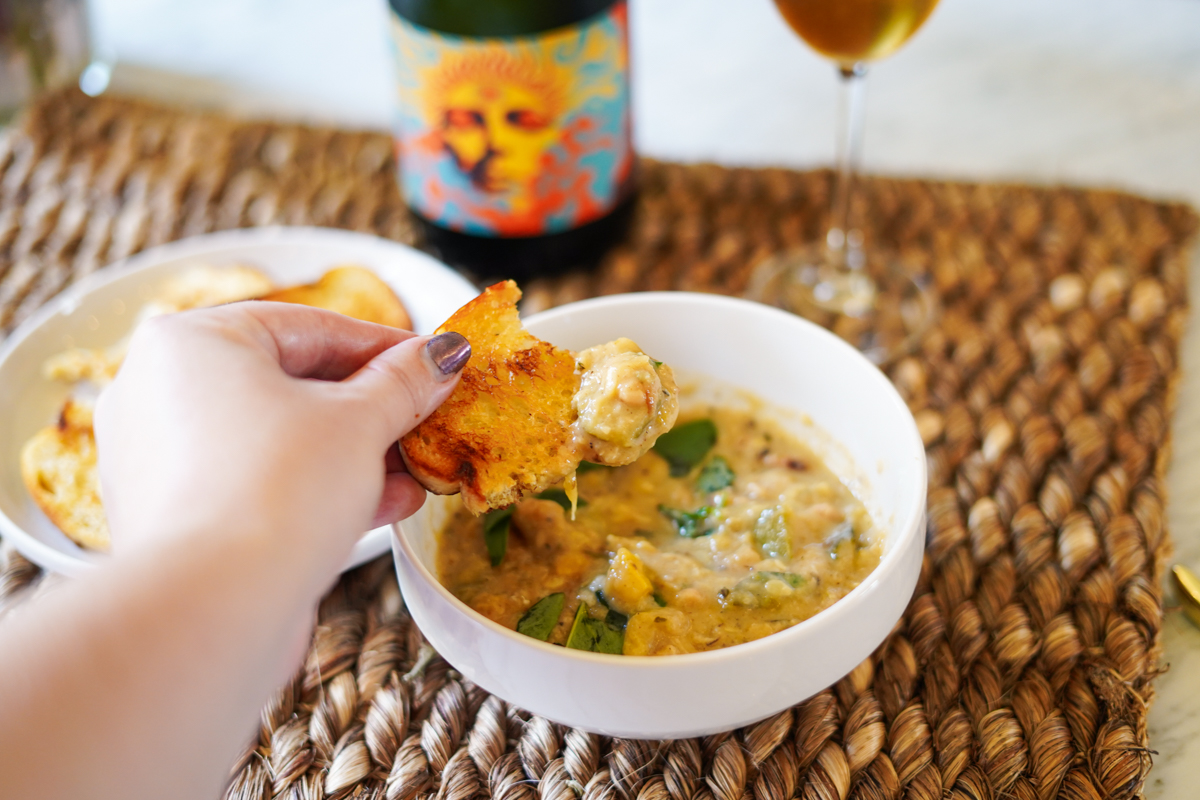
Order Mothersky
The Perfect Temperature for Each Wine
White wine = freezing cold, Red wine = Room temperature, right? Well, not necessarily. While that’s a pretty basic rule to live by, and probably what you learned at the start of your wine journey, serving temperature in wine can be a lot more nuanced than you might think, especially when you start to get into the tannic structure, varietal…and all kind of nerdy wine stuff like that. At Tank, we’re obsessed with staying on our toes and making new cool shit all the time, that means a LOT of different styles of wine, and to get the most out of it, the right serving temperature can be everything. So, let’s break it down, shall we?
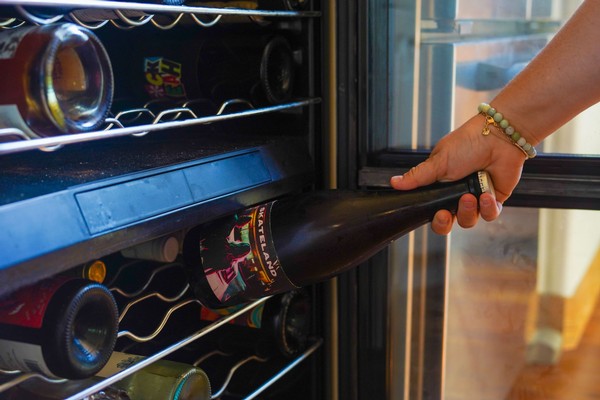
Which wines are best served freezing cold?
Generally speaking, sparkling wines and very light-bodied white wines are best served at an freezing temperature: generally 38-45 degrees F. There is slightly more variation with Rosés! A very light, crisp Provençal-Style rosé is often best served around this temperature too.
Tank Current Release Examples: Alright Fight Club, Skateland, Hippy Sippy, Wild Child, Flowershop
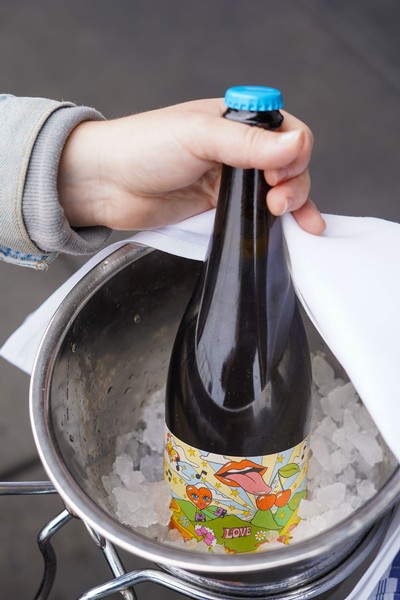
Wines best served "fridge cold," but not freezing?
If a lighter wine tends to have more aromatic flavors, or more of a full body, it will generally be at its full potential if it is a little bit warmer. This is best observed for something like, a fuller-bodied Chenin or Chardonnay, most skin-contact wines, and tannic rosés. At Tank, we love working with interesting varietals, making carbonic and skin-contact wines, so we have lots that fall into this category! Serve these around 45-55 degrees F to have the best drinking experience!
Tank Current Release Examples: Acapulco Swim Club, Love Saves the Day, Occhiali da Sole, Trailer Park Pretty, Mirror Play, Crushed Hearts, La Loba
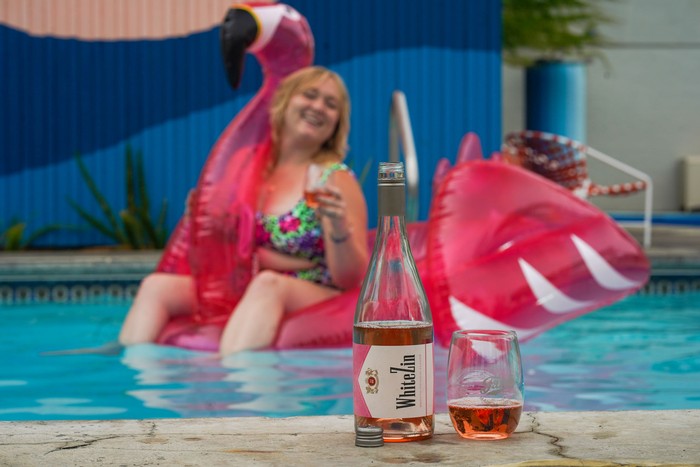
Wines best served “cool”?
While it’s a long-time myth that all red wines are best served “room temperature”, there’s a plethora of lighter-bodied reds that are best served with a very slight chill, around 55-60 degrees F. We love this for a lot of carbonic reds, and ones with a much lighter tannic structure.
Tank Current Release Examples: Bye-Bye Baby, Checkered Past, Lonely Hearts Club, Softcore
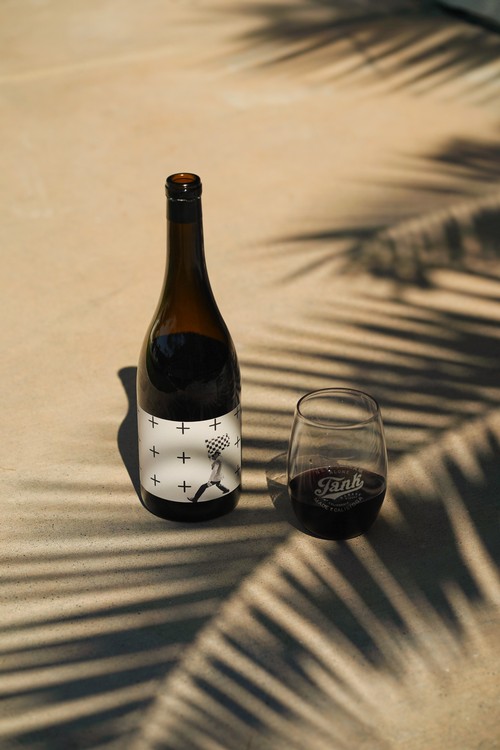
Wines best served closer to room temperature?
Bigger, bolder reds are best served a little closer to “room temperature”. But even this means a serving temperature of around 60-68 degrees F. If you reside in a much warmer climate, it’s not recommended to leave your red wines out. Serving around 60-68 degrees will give you the fullest expression of subtleties, structure and aromas.
Tank Current Release Examples: Fuck Yeah, Stunt, Don’t Forget Me, Dynamic Karate Theory, I Love You but I’ve Chosen Disco, Honky Tonk Girl, Lost Dreams, Heavy Metal Life
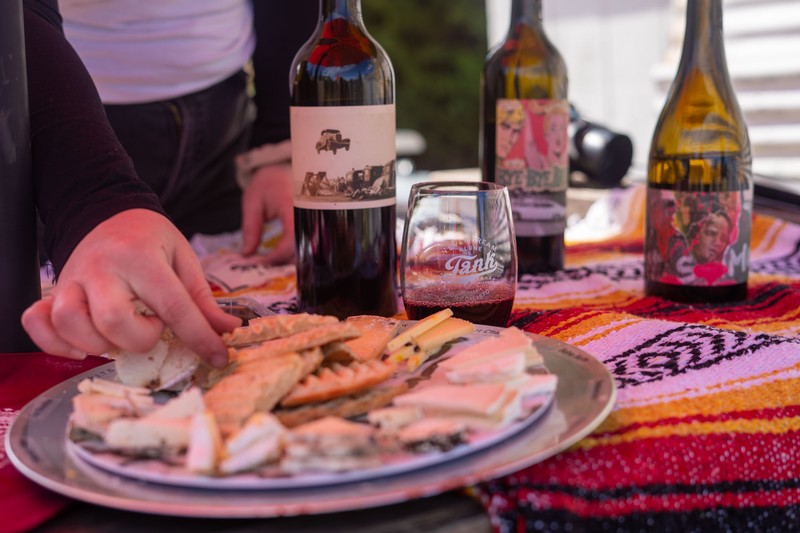
What even is Orange Wine anyway?
Orange wine? What the heck is this? Is it made from oranges? Why does it look like that? WHAT? It’s not made from oranges. Don’t worry. We’re going to get to the bottom of this. Then you’ll have a little awesome context next time you crack the top of your next Acapulco Swim Club bottle.
Wondering where this trend came from? Why are all the hipsters and wine nerds flocking to this mysteriously colored juice? Who came up with this new, kooky idea? Well, it turns out making orange wine is nothing new, in fact, it’s a technique that’s even older than the making of some other old-world varietals such as Syrah or Riesling. Orange wine has been made in The Caucasus Mountains of Georgia for over 6,000 years.
First, let’s get to the bottom of what actually makes something an orange, or skin-contact wine. The color of all wines depends on the time the wine's juice is left to macerate with its skins. Generally, in the white wine-making process, the grapes are pressed directly after being picked, and the skins, seeds, and stems are discarded. When we make an orange wine, we take the white grapes, and subject them to something like the red wine making process: once the fruit is crushed, it is then fermented with the seeds, skins and stems (also known as the ‘must) and left with them for the desired number of days. The longer the contact with the must, the more intense the color will be.
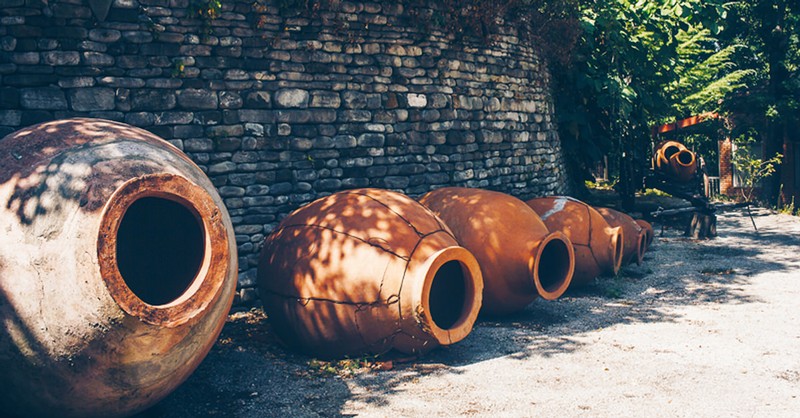
Assyrian Monks in Georgia began packing crushed grapes into qvervi, large egg-shaped Terracotta clay pots, with their stems and all, and then burying them underground for natural refrigeration. This provided a longer maceration period for the juice and skins, that would have spoiled the wine if left above ground. The extended maceration also helps develop an increase in aroma and flavor profiles in qvervi wines. Farming families and communities all over the area began to carry out these practices and pass on through generations. Super cool, right? So, where’d they go for so long?
With their lack of electric refrigeration years and years ago, this skin-contact technique was a way of extracting color, tannin and other oxygen-scavenging elements in order to preserve the wine the best they could. Once refrigeration was on the scene, people were able to start making more “polished” and technically “correct” white wines, and sometime around the start of the 20th Century, they were being produced on a much larger scale. This largely erased the culture of this ancient tradition for economic favor (you know…capitalism).
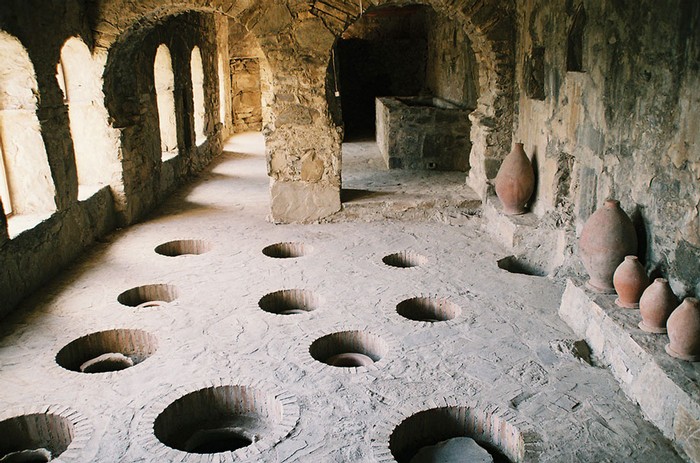
In the last 20 or so years, orange wine has come back into popularity, and the heritage of its tradition is being honored. Winemakers in Slovenia, Friuli and Croatia were inspired by the culture of the Georgians, and have now been making orange wine for hundreds of years, and are now returning to their roots and gaining recognition. In 2013 Qvervi wine-making tradition was also inscribed onto the UNESCO World Heritage List to mark its intangible connection to Georgian culture and humanity.
And now here we are in good ‘ole California! At Tank, we’ve been making orange wine since 2015 with the 2016 release of van Zyl (named after our awesome wine maker), and we’ve never looked back. They are so fun to make and to taste, with the range of grape skins giving off such a kaleidoscope of different textures, aromas, and flavors. Skin-contact wines can really range in color from very light, pale amber like our 2021 Trousseau Gris, Occhiali da Sole to a much deeper and more vibrant hue, like our most recent orange exploration with Acapulco Swim Club. We recommend serving most skin-contact wines in a cool but not cold temperature range: around 55 degrees Fahrenheit, so that you’re able to experience the whole expression of its aromatics and awesome-ness.
Oh, and orange wines LOVE food. Once they are paired with a cheese plate, all is right in the world. These wines can often hold up to more robust and bold flavors, so don’t be shy, buy those funky cheeses and get weird. It also provides an ideal middle ground when deciding between red and white: still offering that refreshing light quality but providing more texture and tannin.
New to the world of orange wine? We suggest starting with something easy and approachable like the aforementioned Occhiali da Sole, which received 2 days of skin maceration, as opposed to the 9 days that was executed for Acapulco Swim Club. Both are absolutely killer, and perfect for summer. Also check out our other orange blend, Love Saves the Day, if you want something right in the middle! Crack ‘em open with your friends and give them the history lesson they didn’t know they needed!
Shop Acapulco Swim Club
Shop Occhiali Da Sole
Shop Love Saves the Day
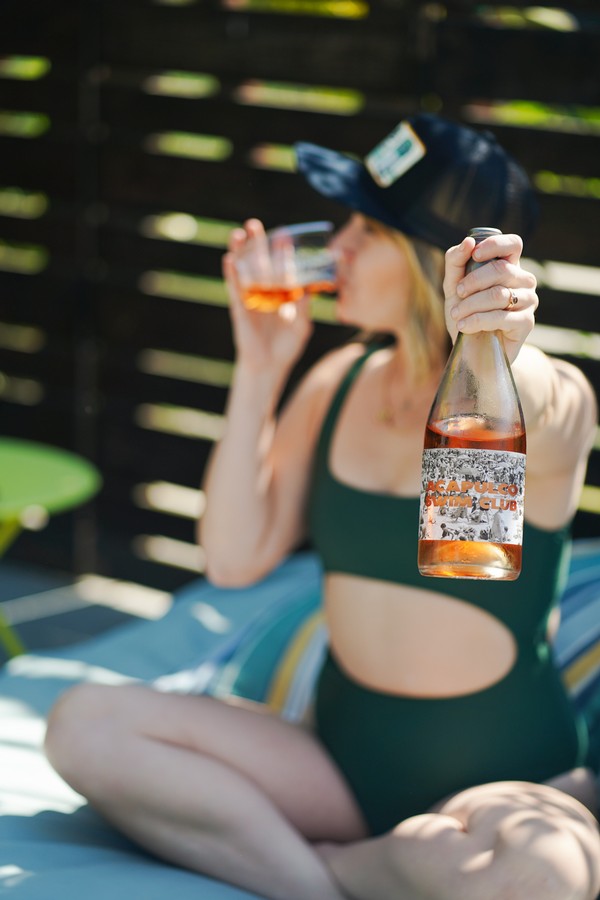
The Perfect Wine for the Perfect Summer Destinations
We're here to give you the inside scoop on all the best California places to hang out this summer, and we've got the perfect wine to match each vibe.
Palm Springs/Acapulco Swim Club
This killer skin-contact blend is best enjoyed poolside in late afternoon heading into a perfect golden evening. We think Palm Springs is the ideal setting for sipping on some Acapulco Swim Club. With the strong summer heat and a desert setting, head here to lounge at a luxury resort or boutique hotel, take in the mid-century modern architecture, or unwind at a stylish cocktail lounge. Stay at Casa Cody or The Thompson, and check out The Penney for delicious food and drinks.
Big Sur/Hippy Sippy
Pack up your cooler and pop open some Hippy Sippy an epic cliffside. After a perfect hike through Julia Pfeiffer or Andrew Molera State Park, this is the perfect light and bubbly refreshment for your picnic lunch as you bask in the salty breeze and look out for whales on the horizon. After your afternoon of exploration, head to the Henry Miller Library to browse books, or see some live music, and then to the Big Sur Bakery and Restaurant for dinner.
Venice Beach/Fuck Yeah
The gritty energy of Los Angeles’ Venice Beach will have you quoting “Fuck Yeah,” all day. Watch the skaters make strut their stuff at the legendary Venice Skate Park, head to Gjusta Bakery for breakfast or lunch, stroll the canals, eat tacos from Teddy’s Red Tacos, and finish the day off with our perfect take on a Super-Tuscan, while you chill on the beach and watch the surfers catch waves.
Sequoia National Park/Don't Forget Me
Marvel at these amazing trees (basically modern-day dinosaurs) as you wander through the magical trails of Sequoia National Park. After a full day of exploring amazing wonders like the biggest tree in the world, Muir Grove and Crystal Cave, settle down at your campsite for some perfect stargazing and pop open this bottle of this Sonoma County Cabernet Sauvignon and take in beautiful woodland odors of cedar and oak while you start up the fire.
San Luis Obispo/The Alright Fight Club
San Luis Obispo is the coolest place to visit in the Central Coast of California, and with grapes sourced from The Edna Valley, just outside of town, our Grüner-forward, Alright Fight Club, is the ideal partner to a day of adventure in the Pacific breeze. Visit some cool wineries like Biddle Ranch Vineyard while you’re there, check out the cute restaurants and boutique shops downtown and stay, or at least go and ogle the unmatchable kitschy-ness of The Madonna Inn. Bring your wine to the Sea Chest Oyster Bar for the perfect pairing!
Lake Tahoe/Trailer Park Pretty
Boating, biking, water sports, climbing, swimming…the list goes on. It’s really easy to have an action-packed time, really anywhere you travel in Lake Tahoe. We picture that a bottle of our Trailer Park Pretty White Zin is the perfect accompaniment to a daytime boat ride or afternoon post-swim. No matter what your plans are, this rosé is guaranteed to quench your thirst after a day of adventure on the water. If you're staying in South Lake Tahoe make sure to check out Burger Lounge for legendary nosh, and The Hangar for a great beer, and an even greater hang.
